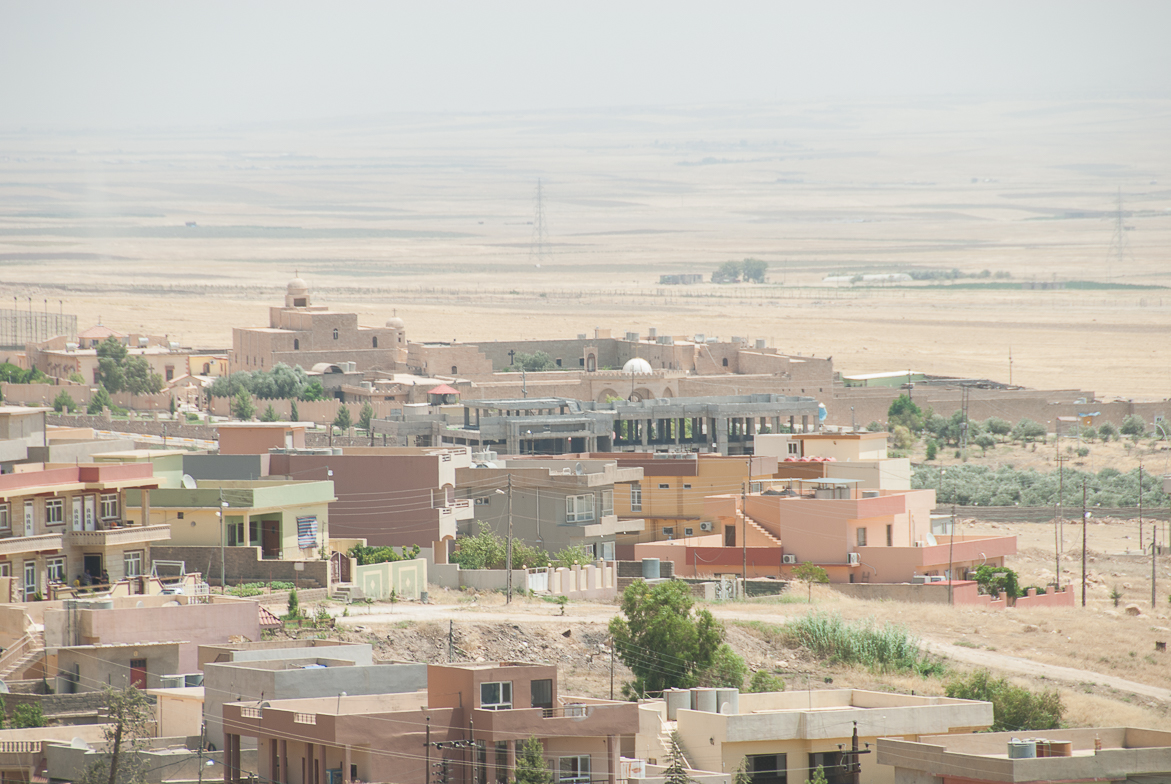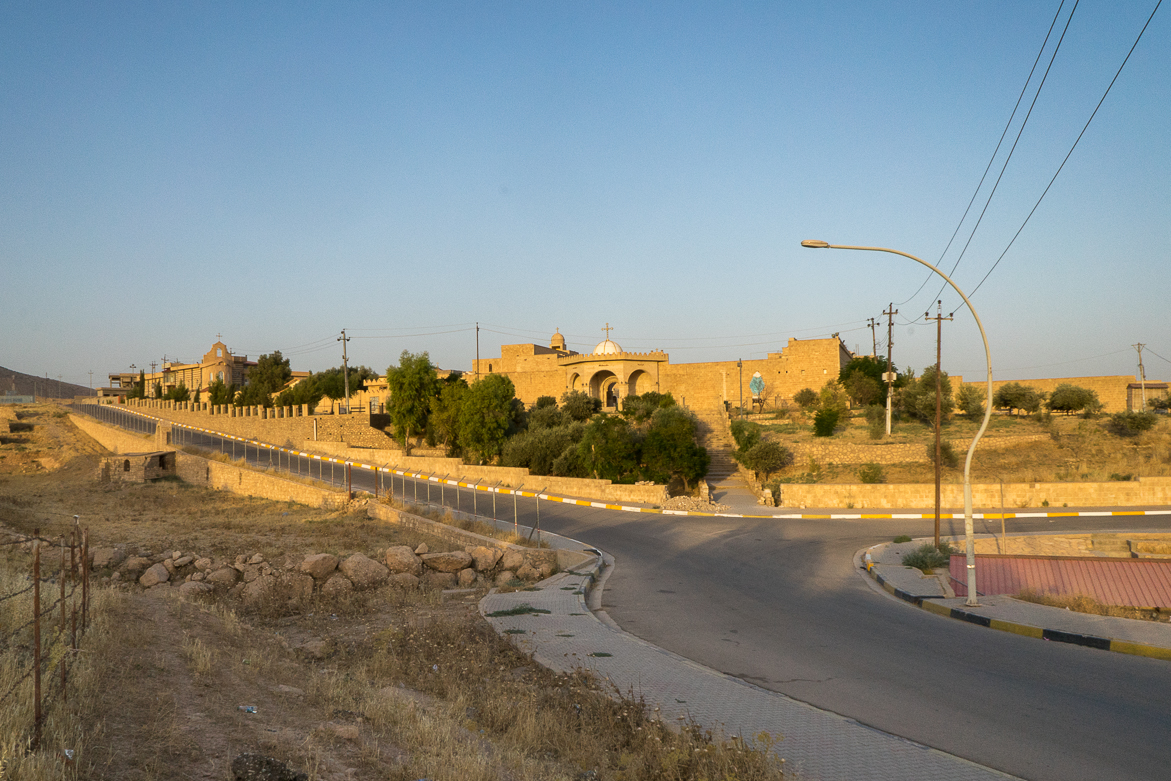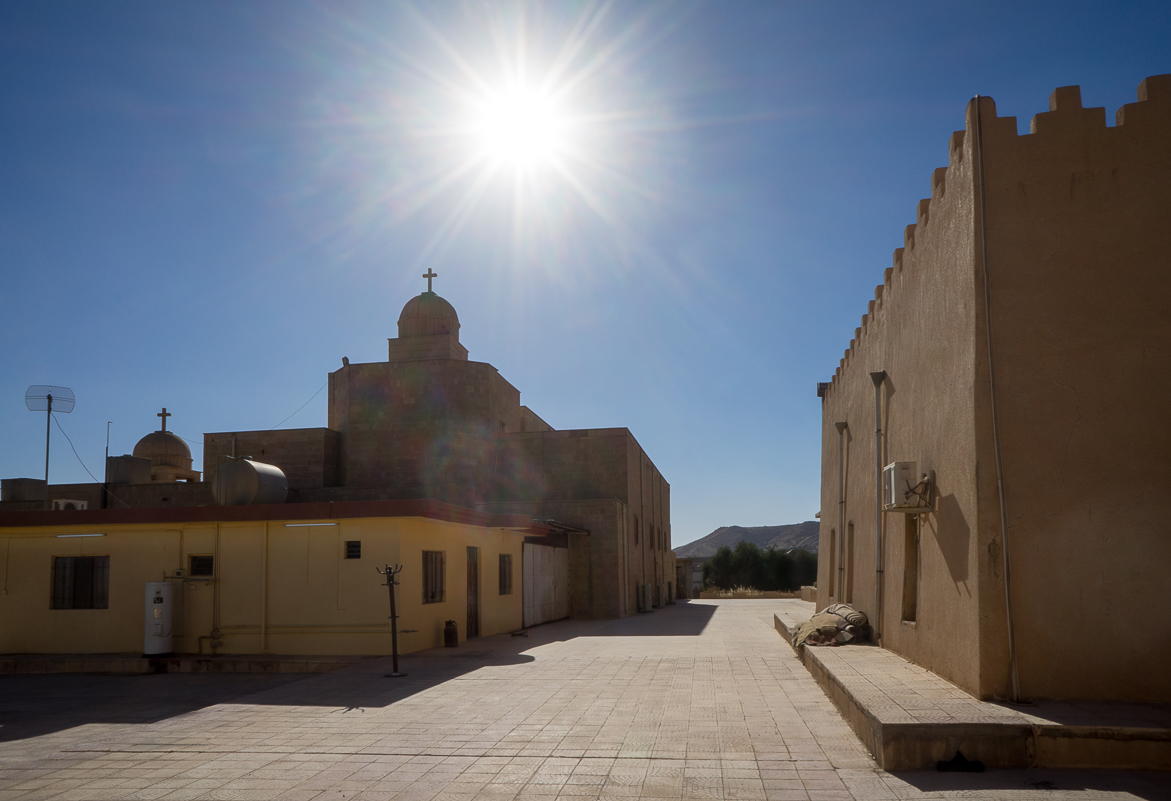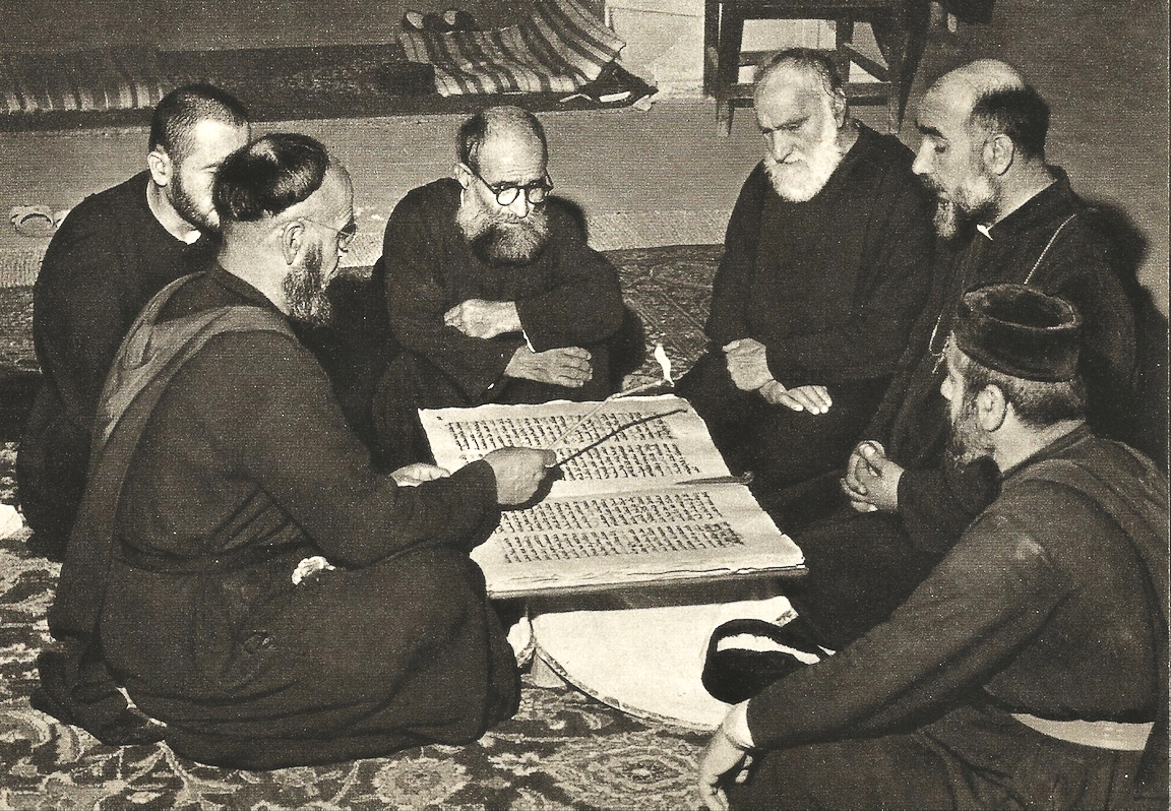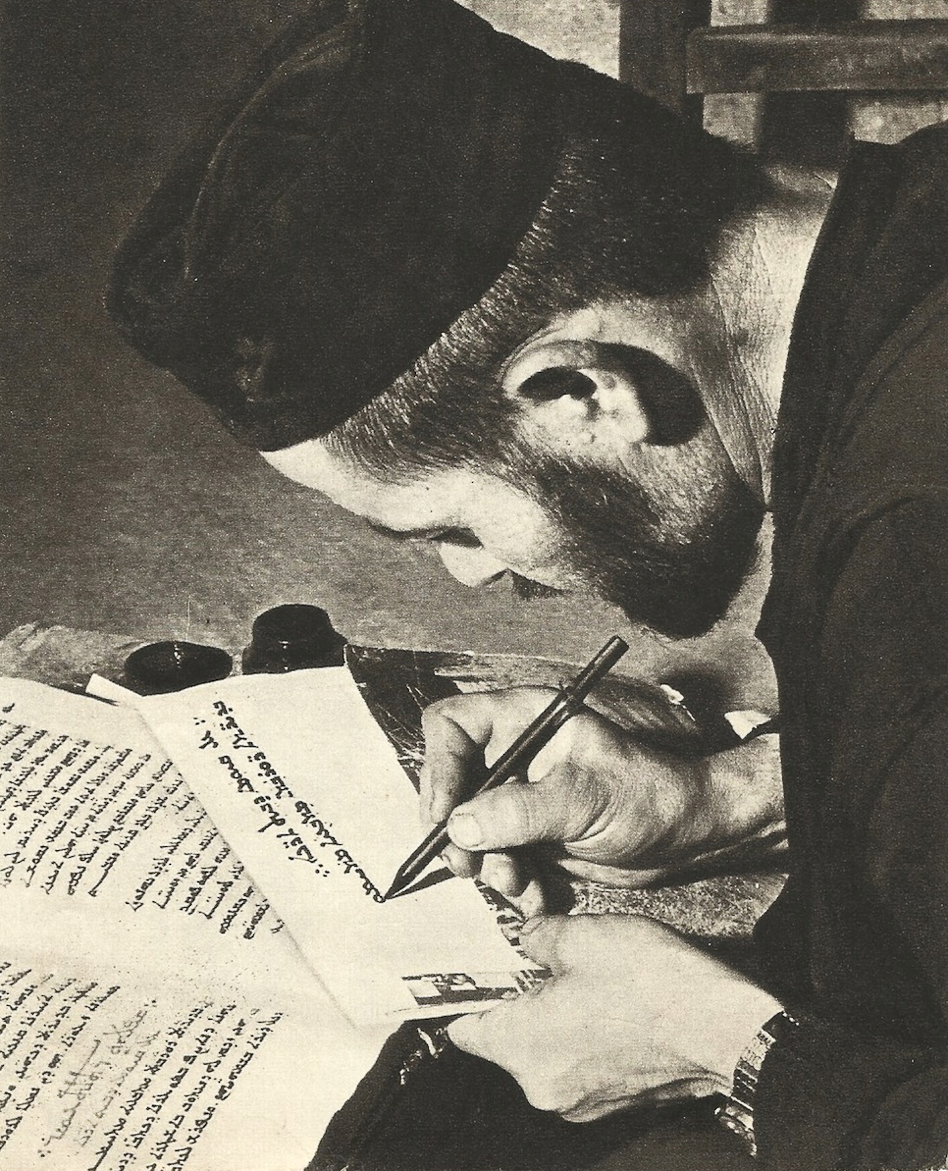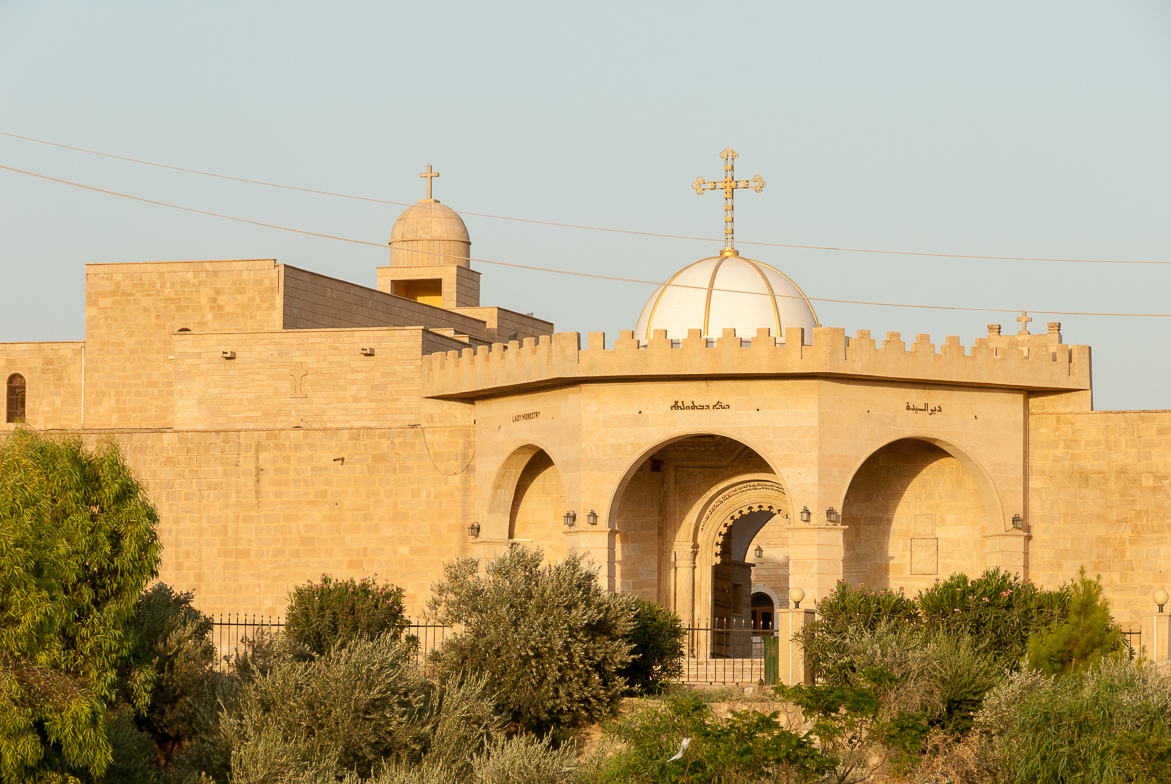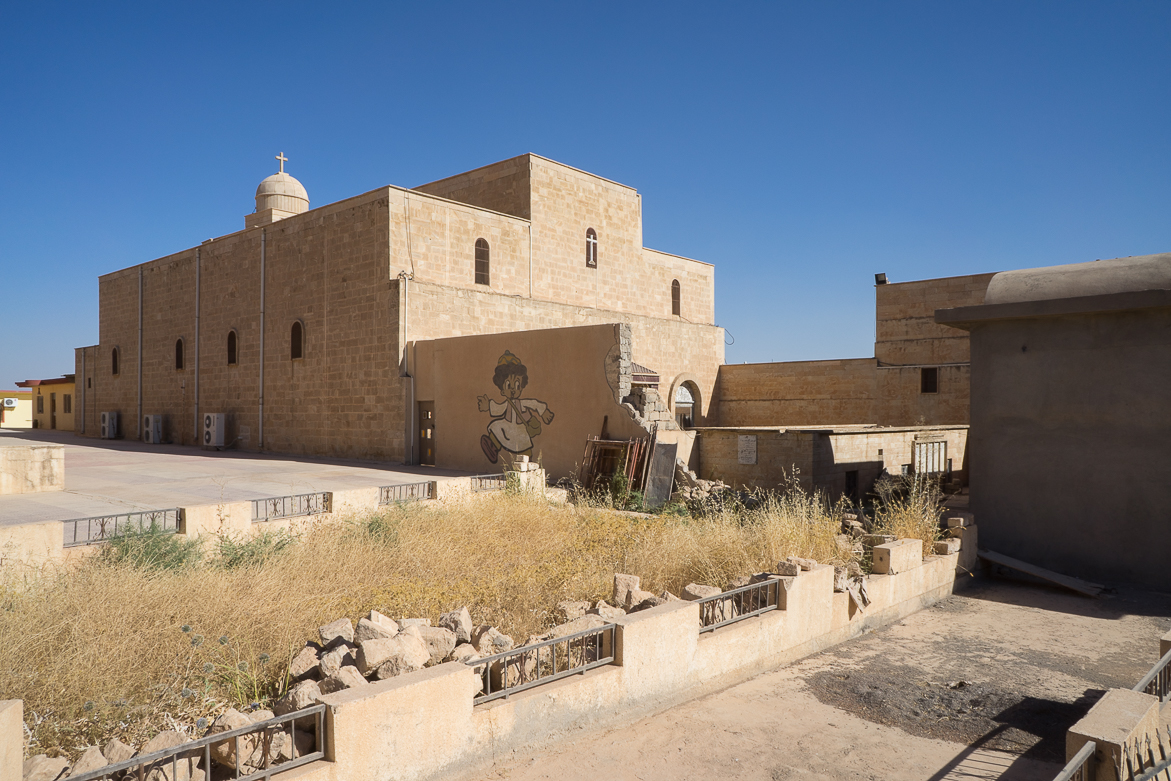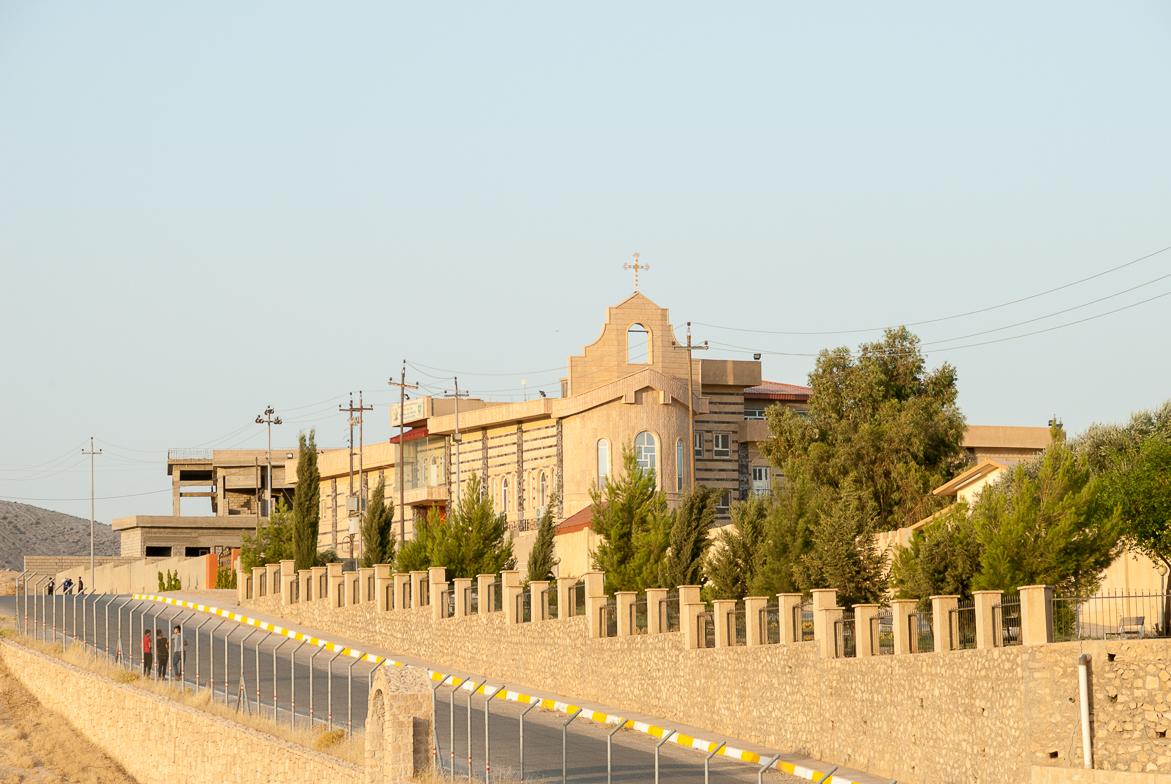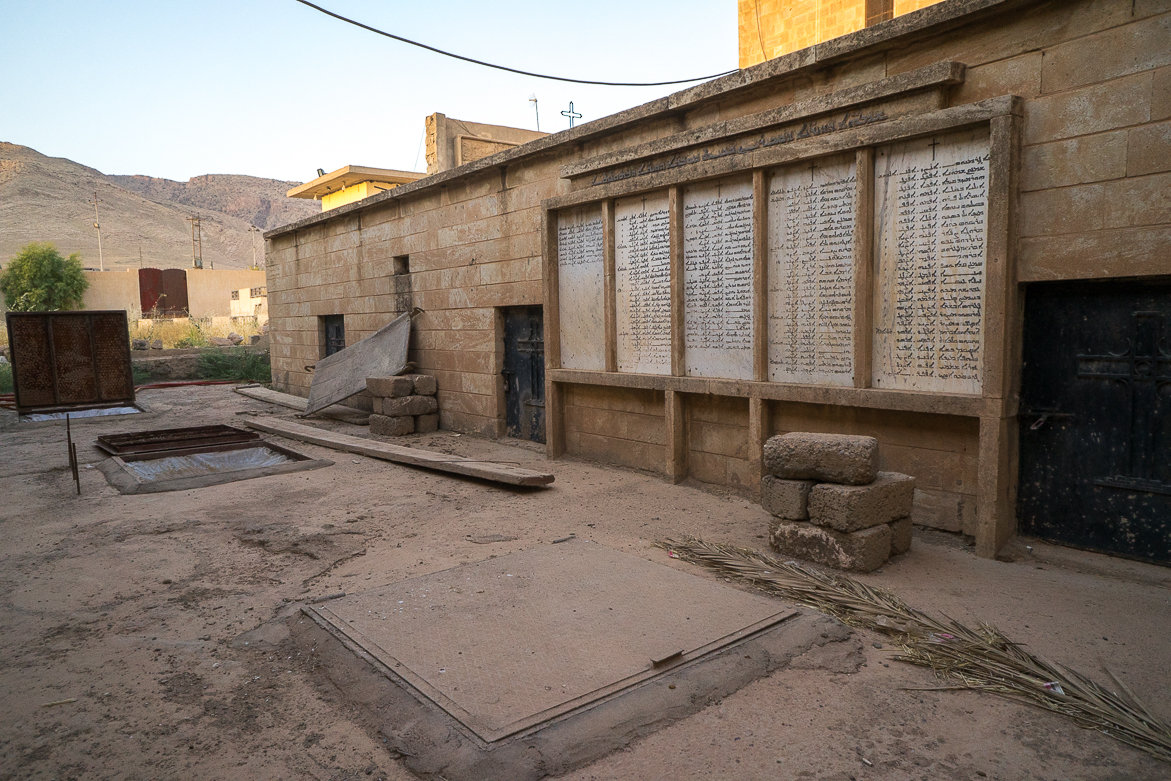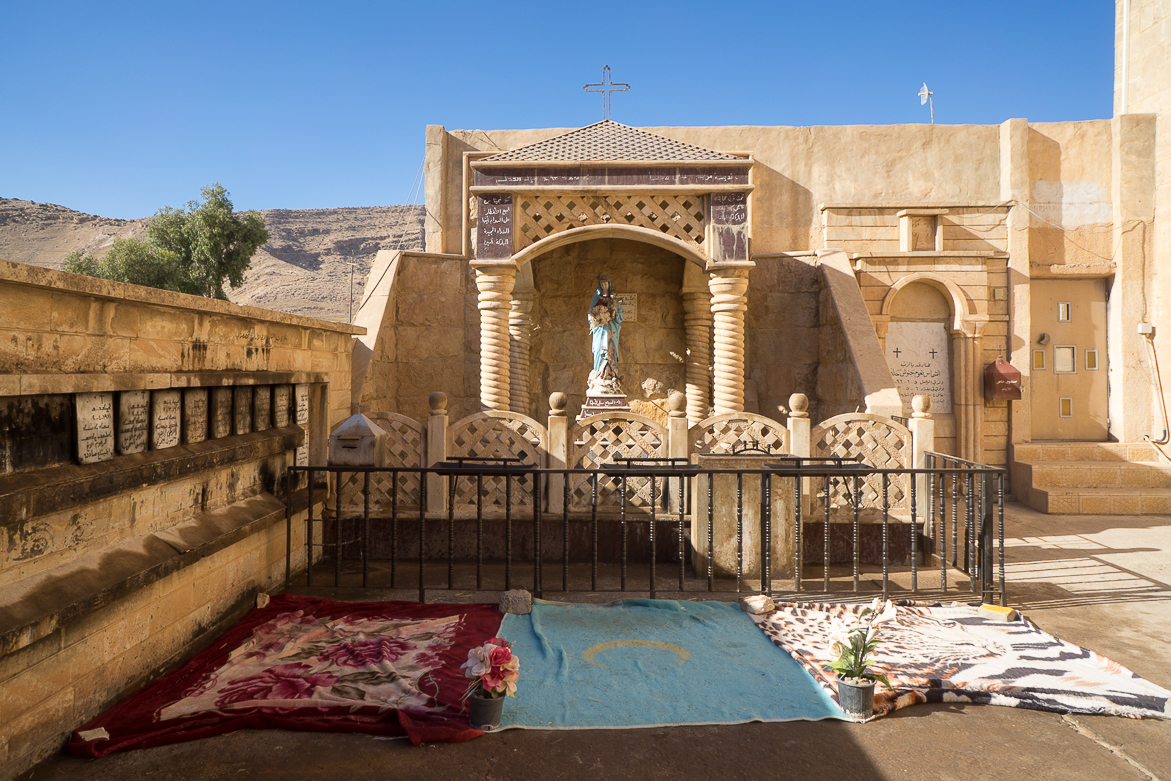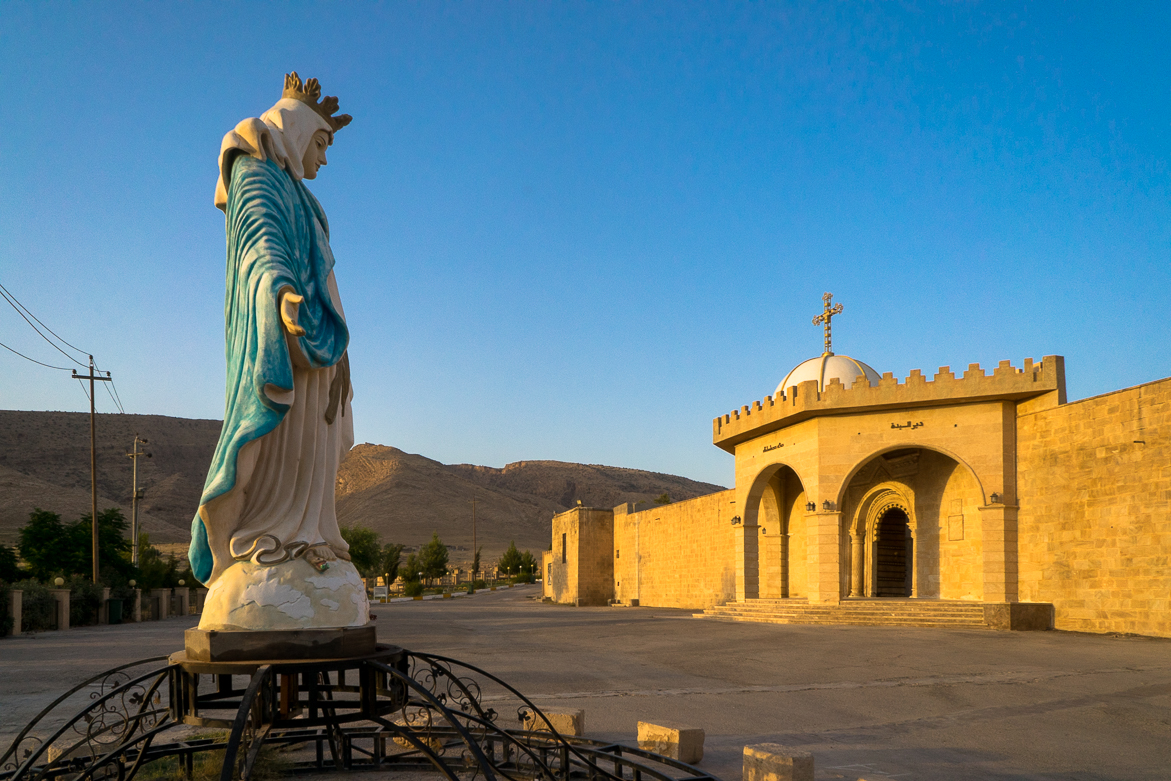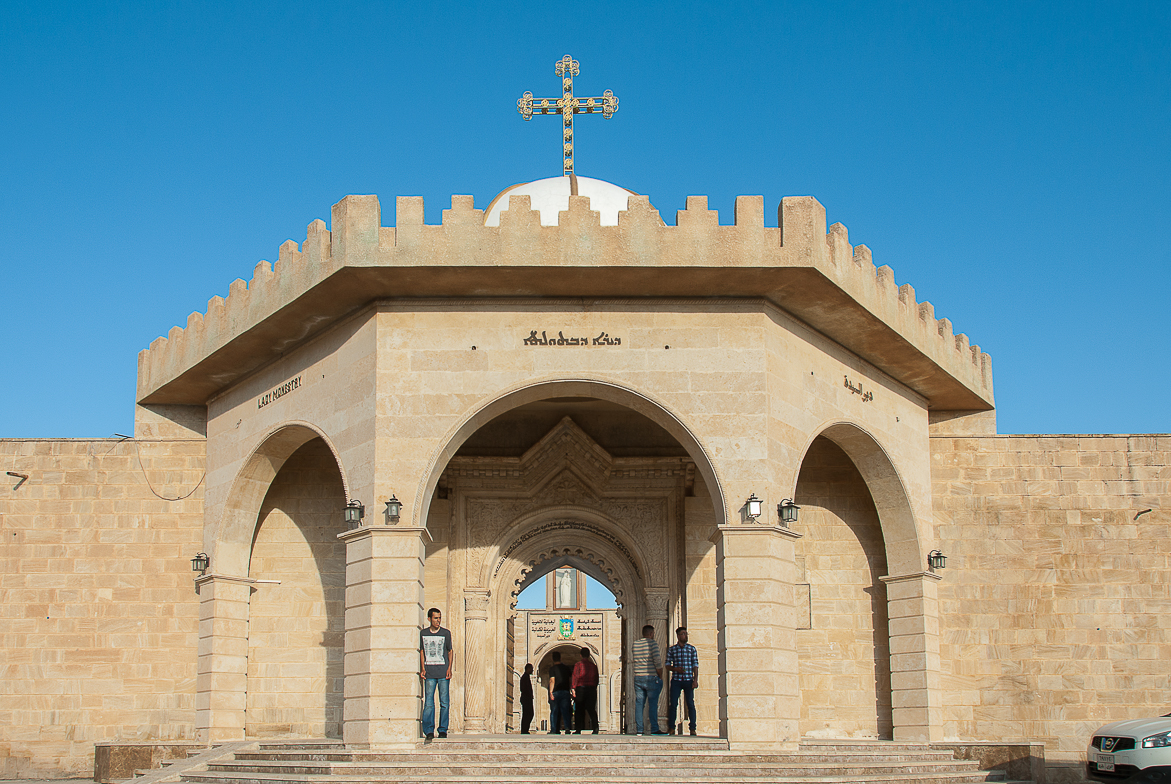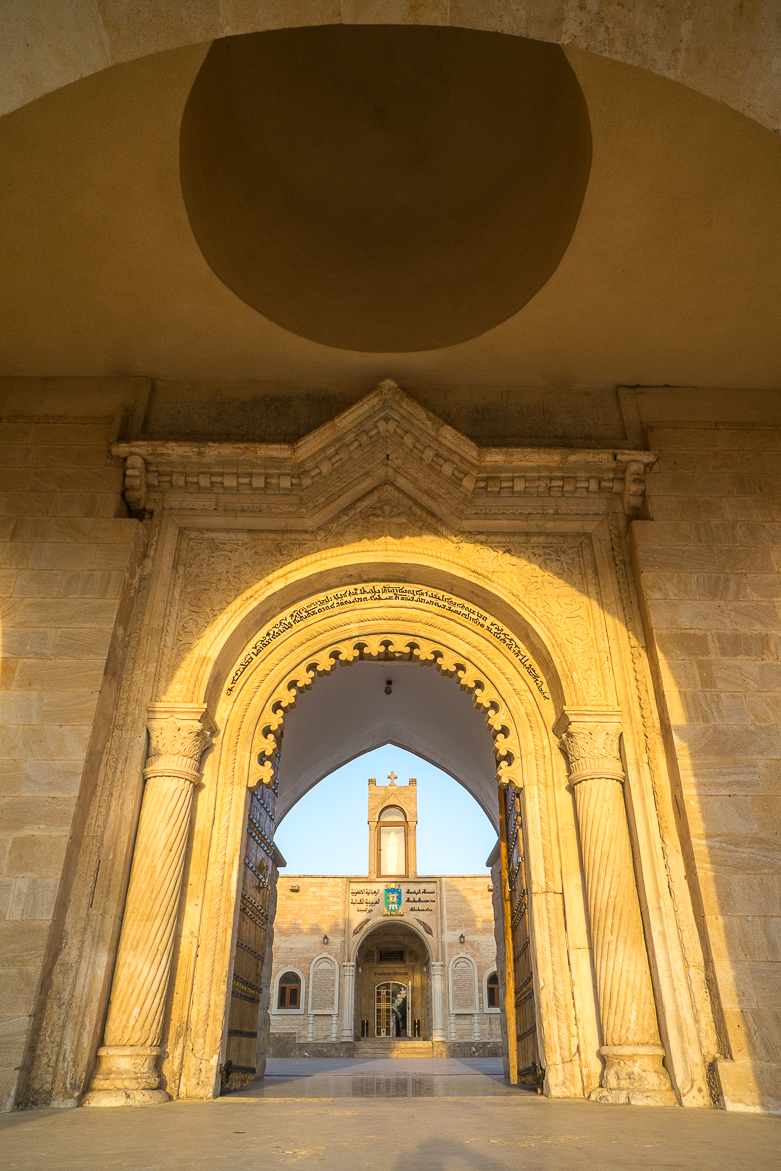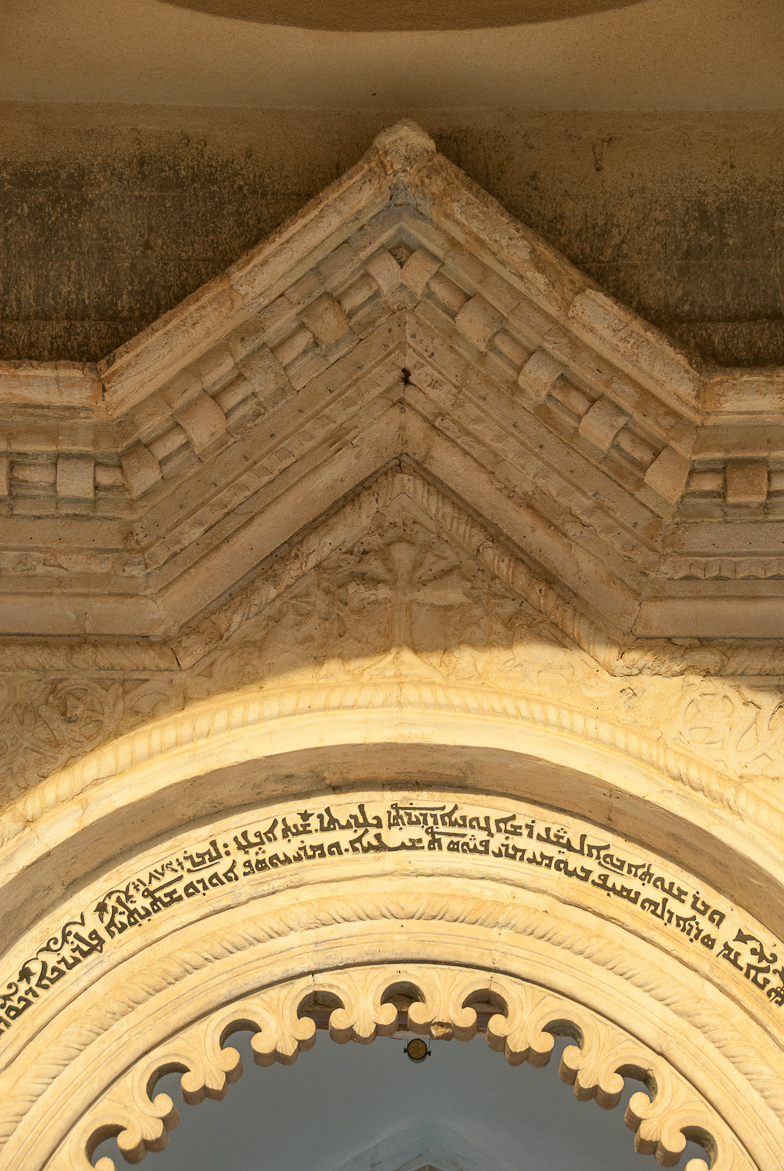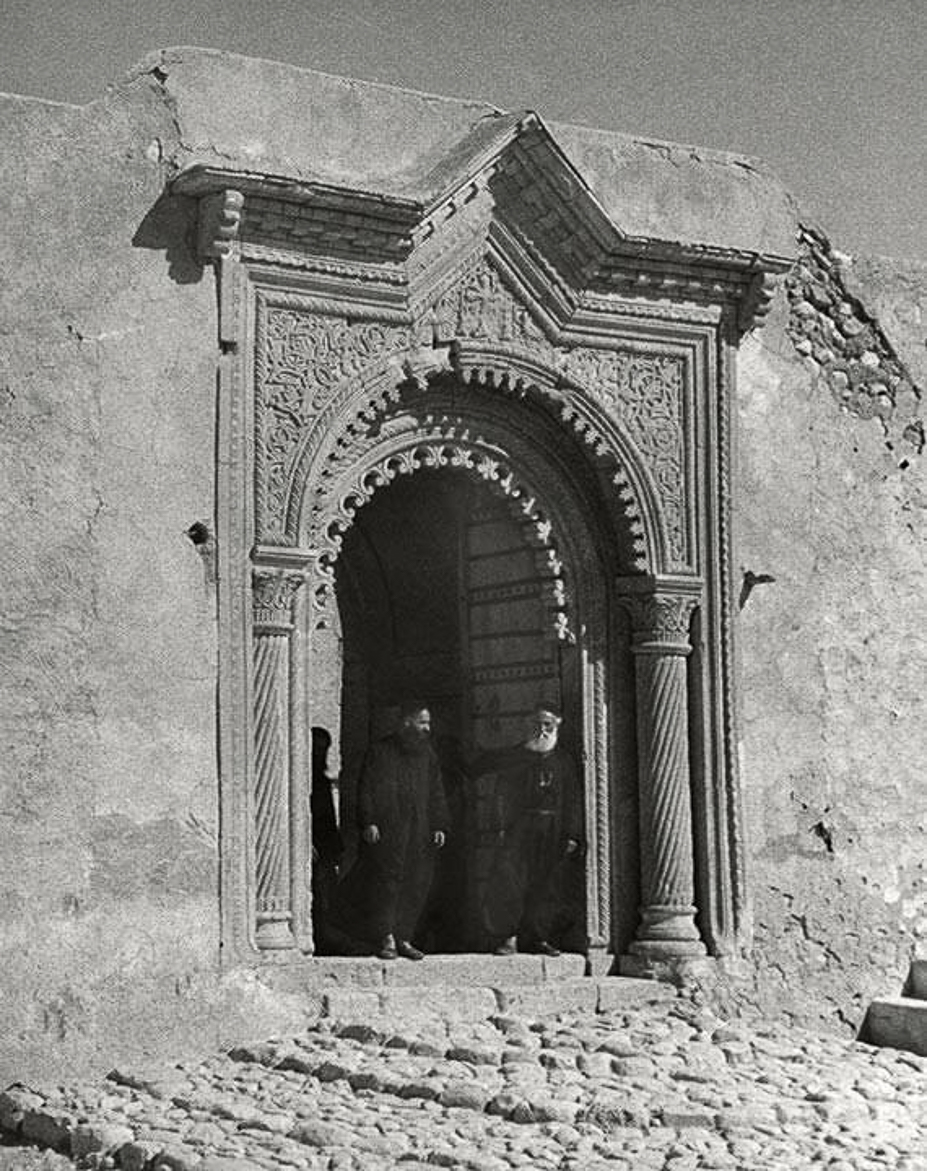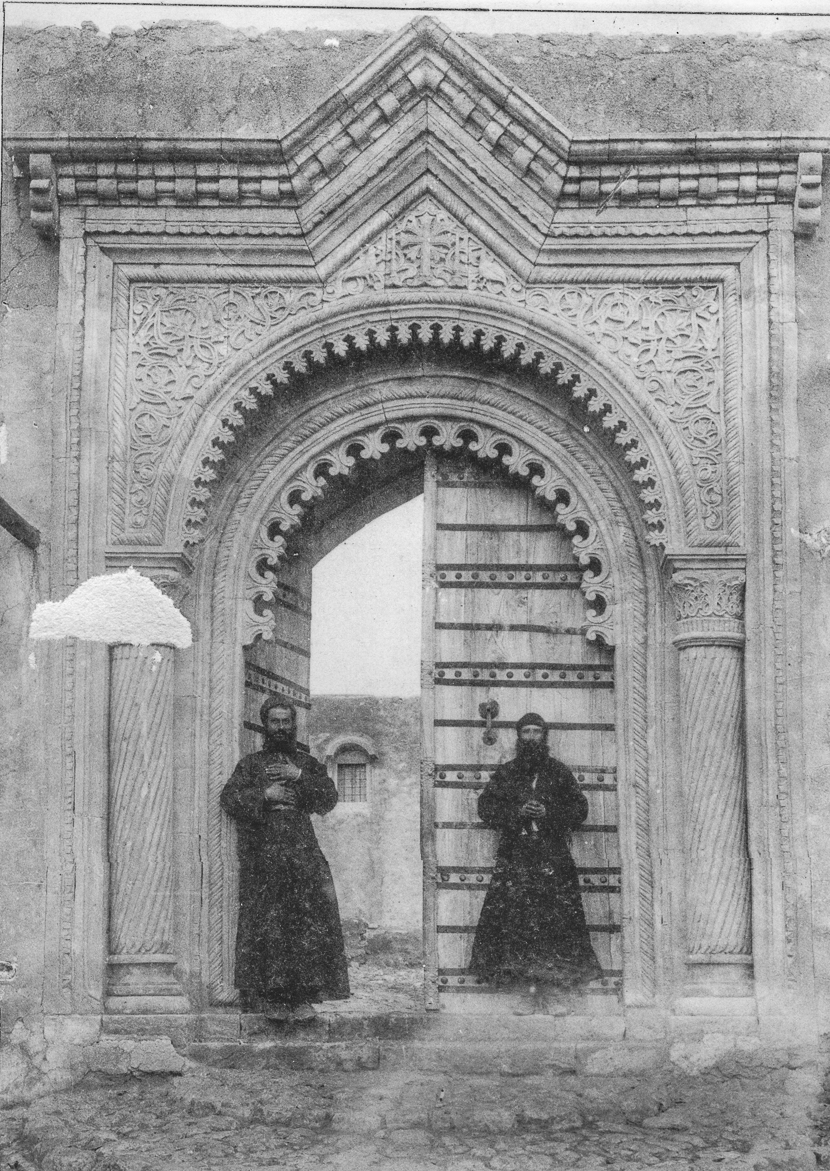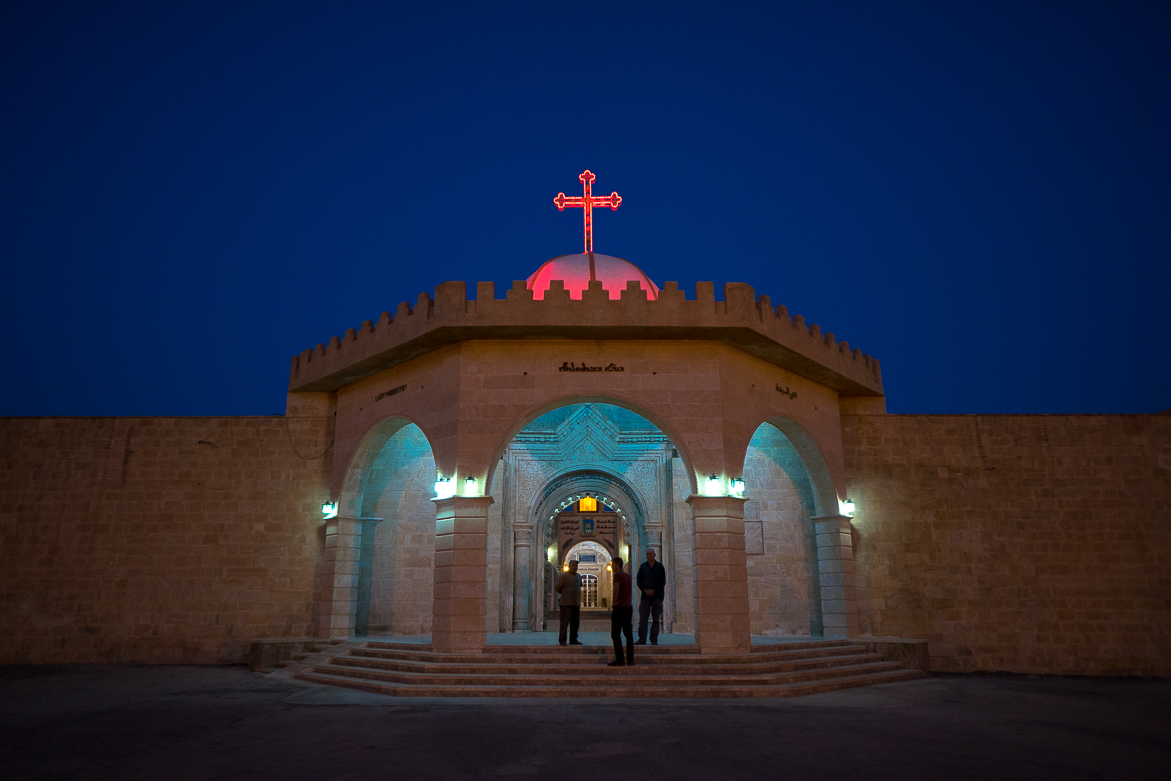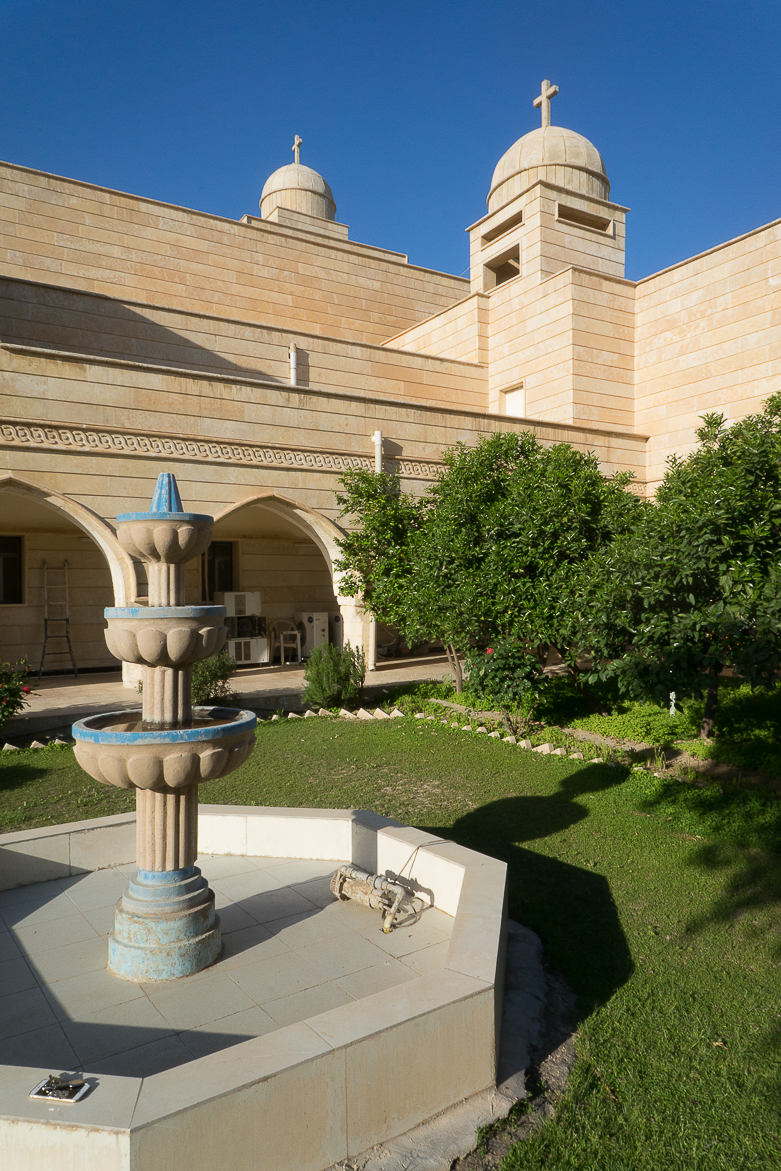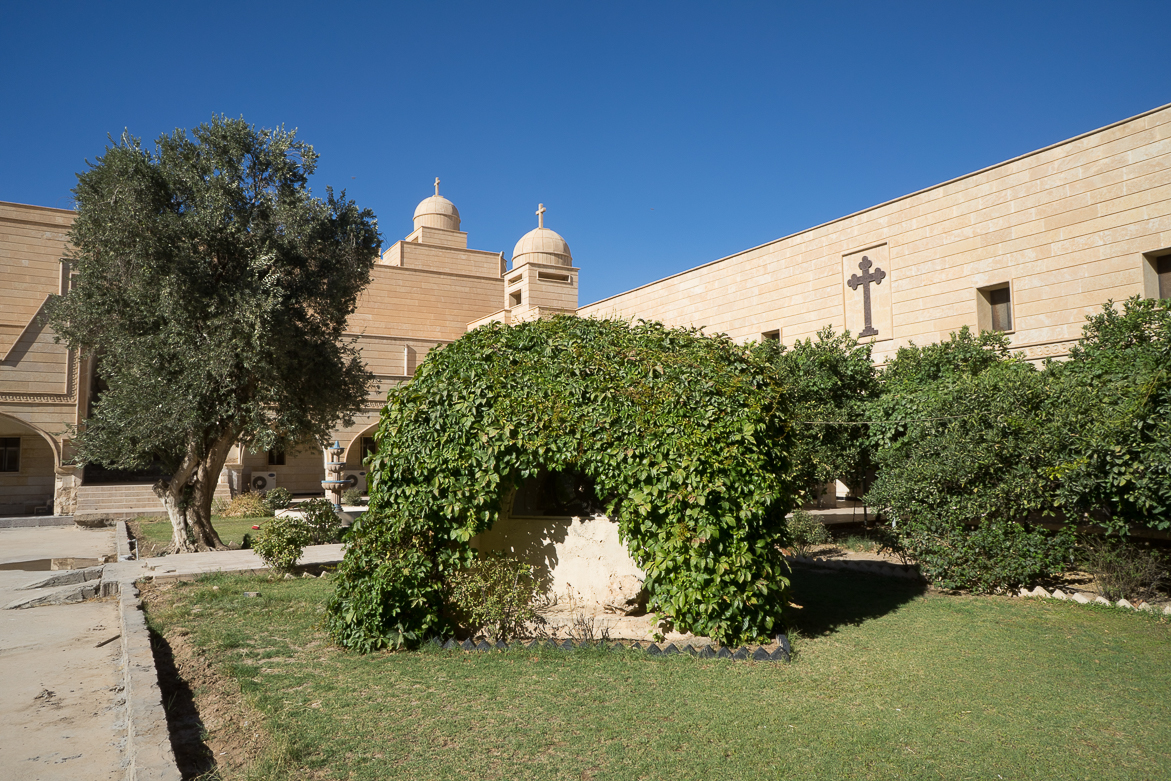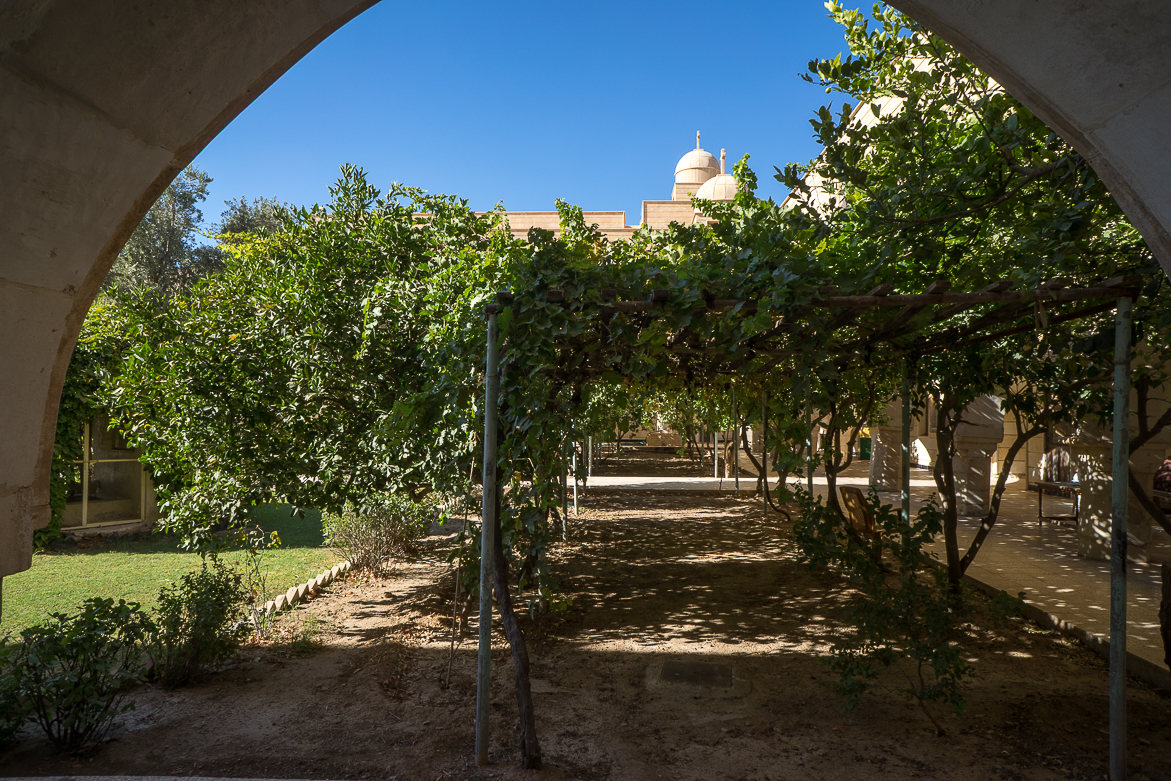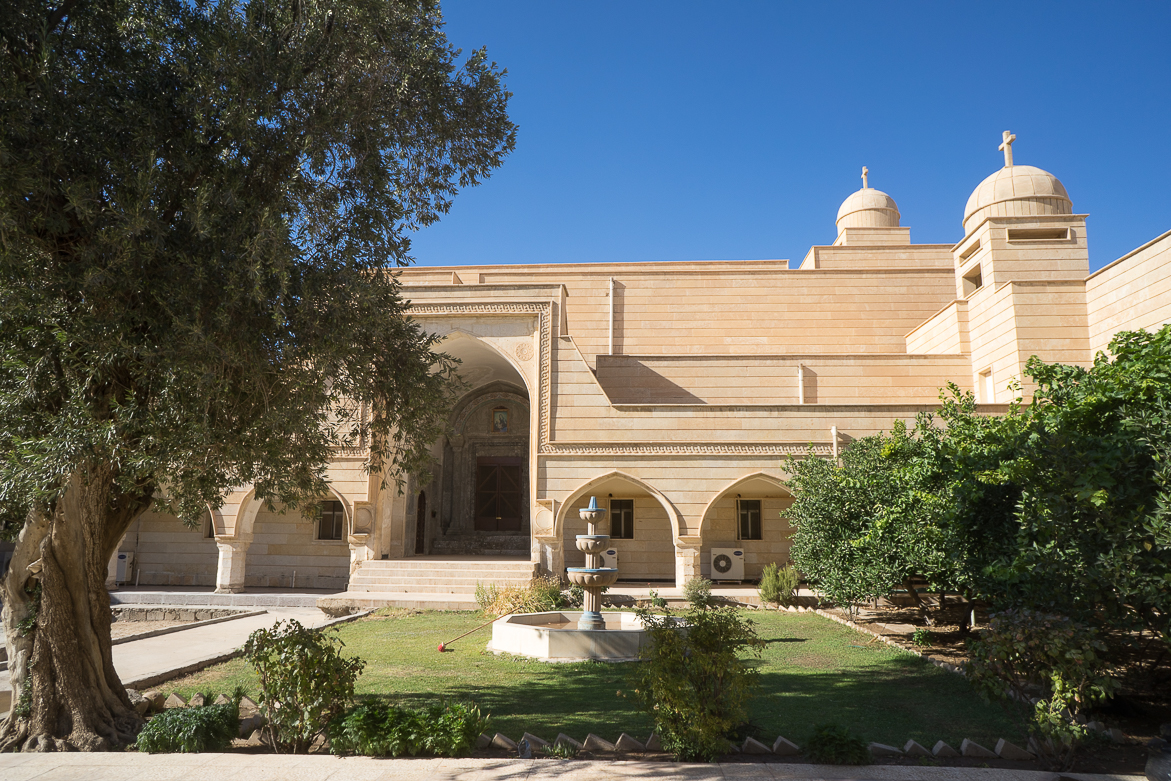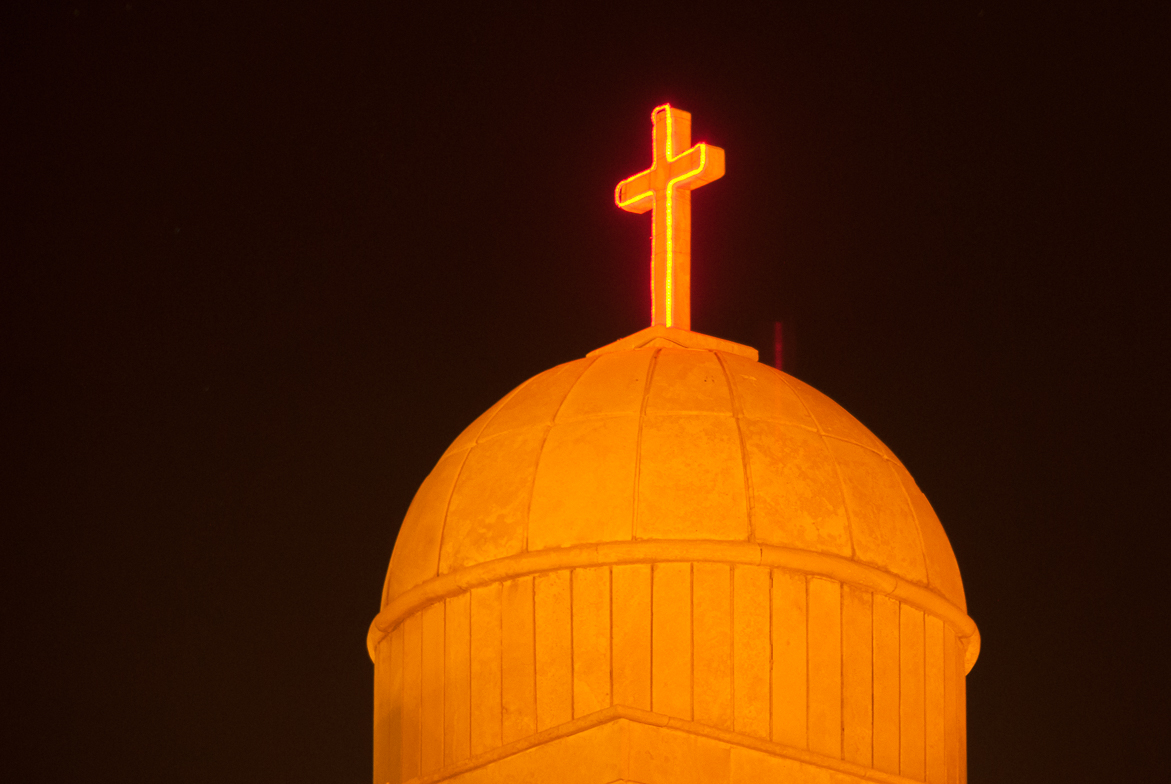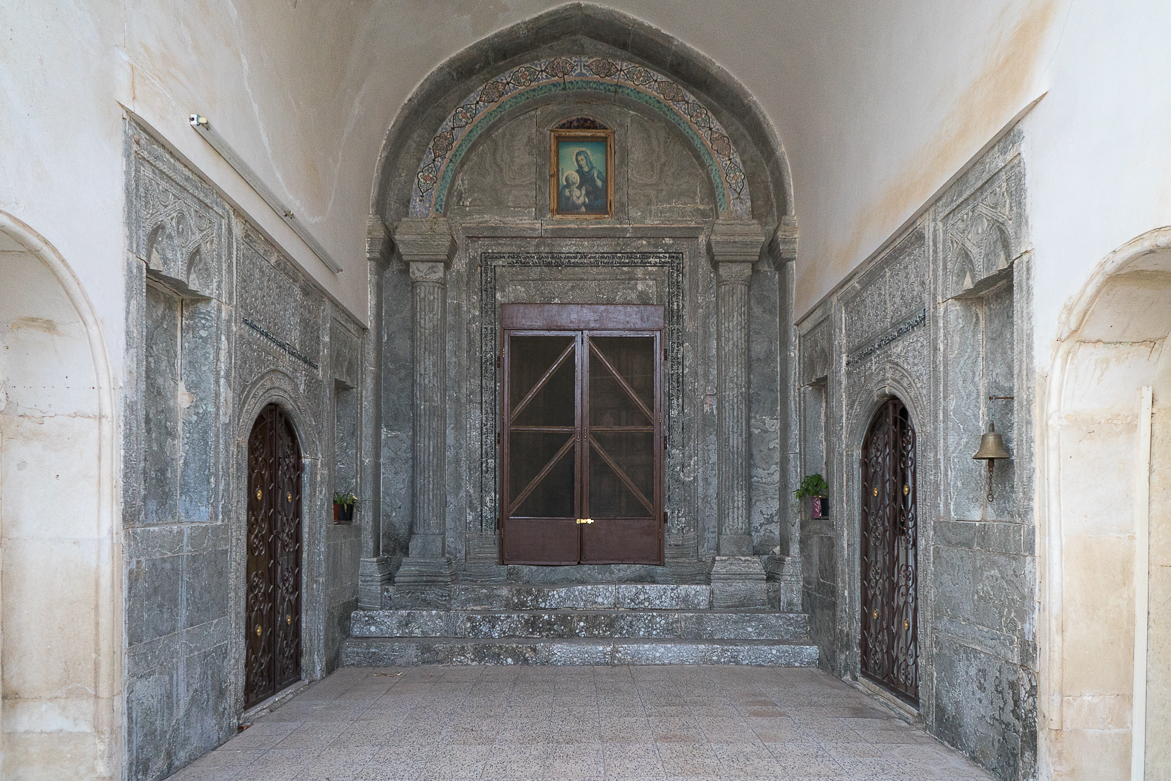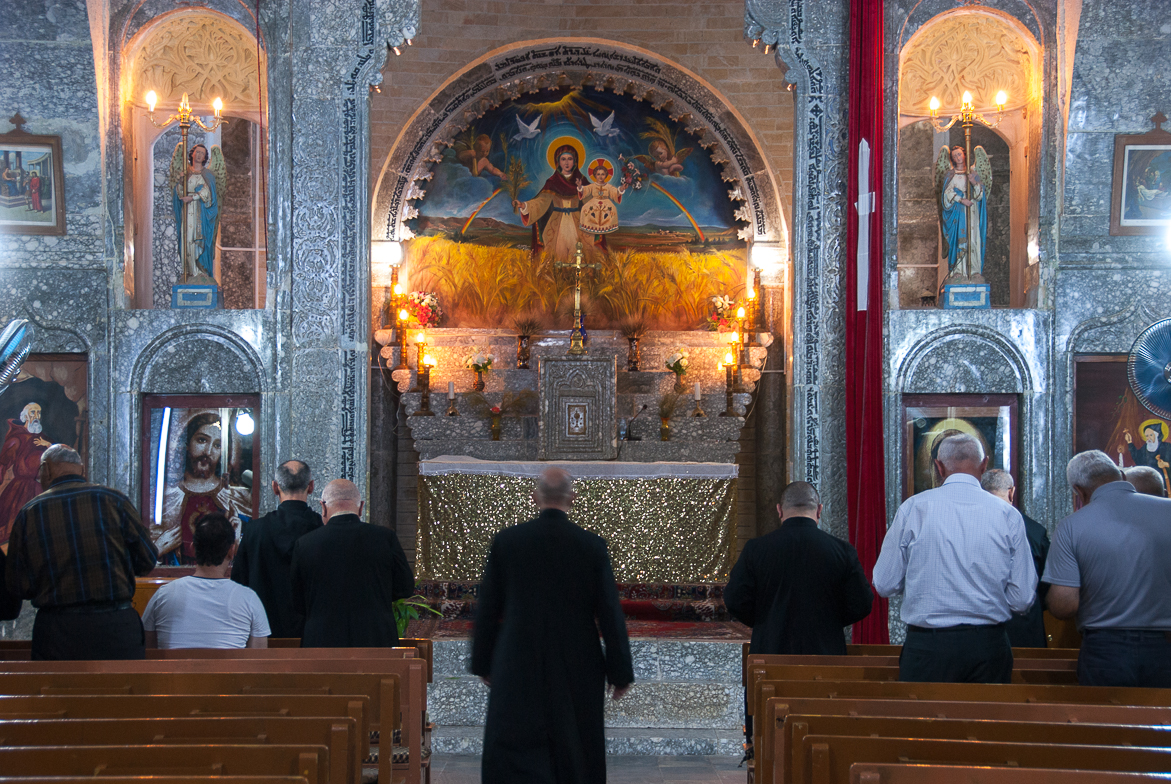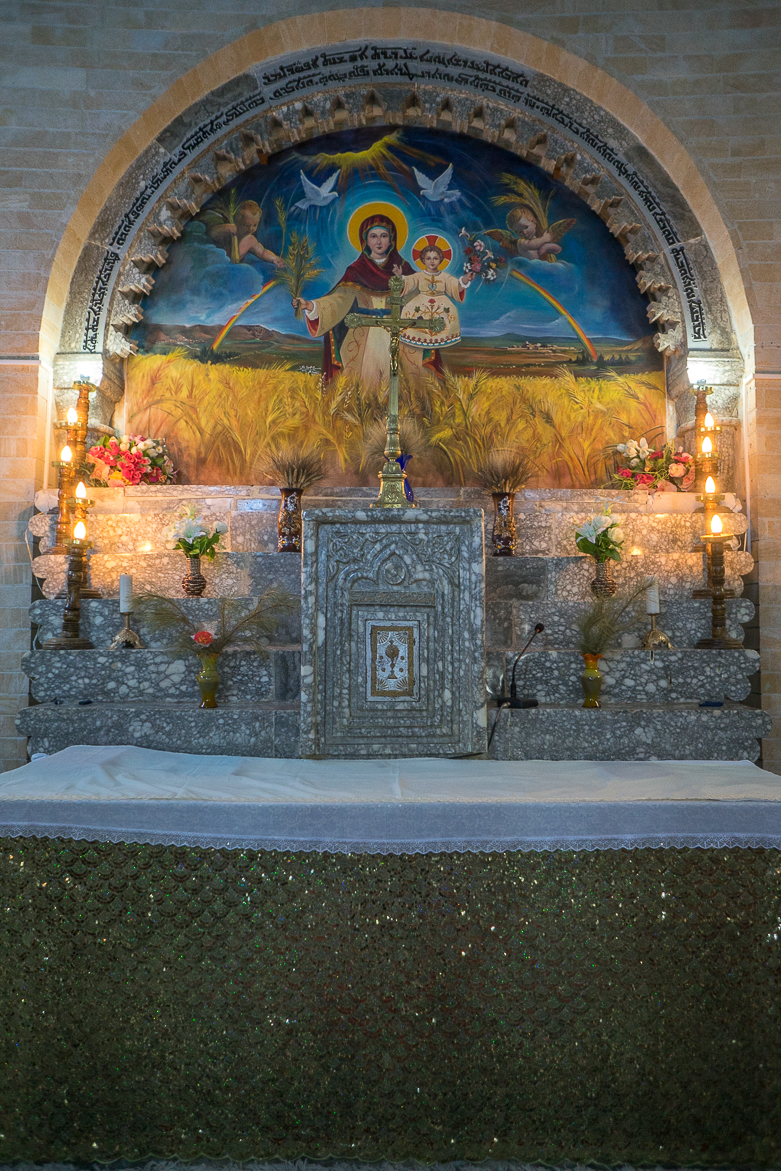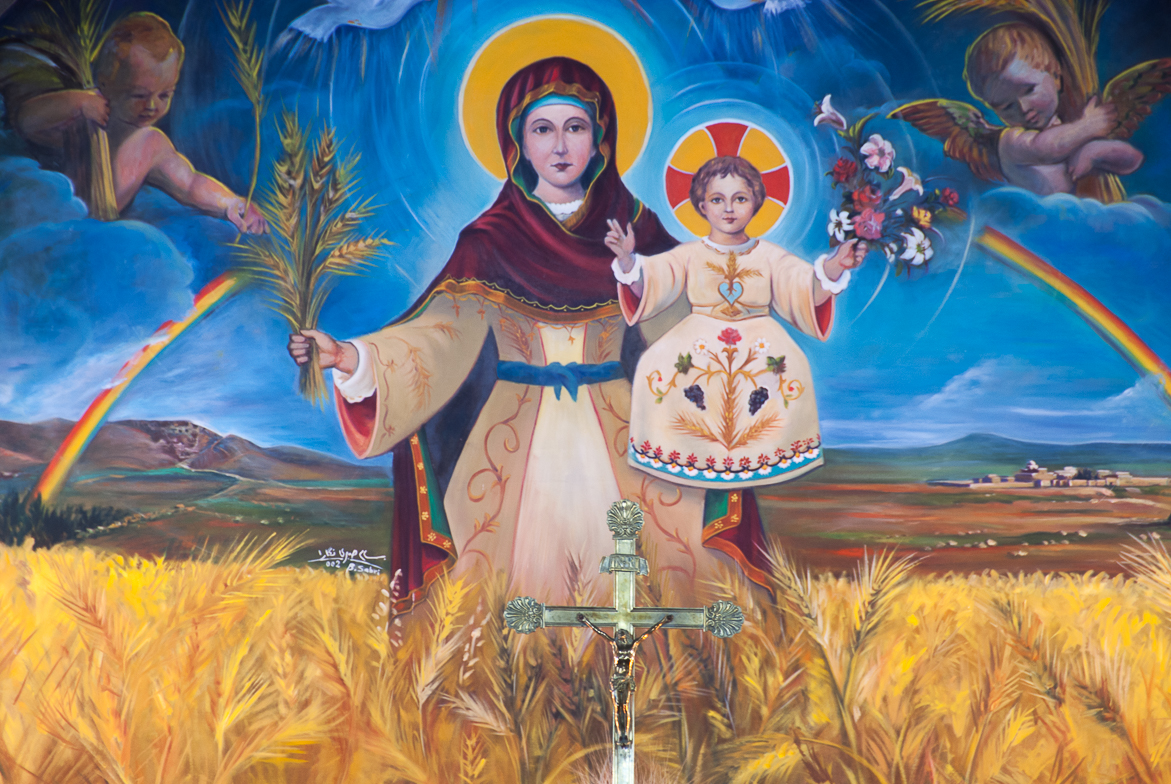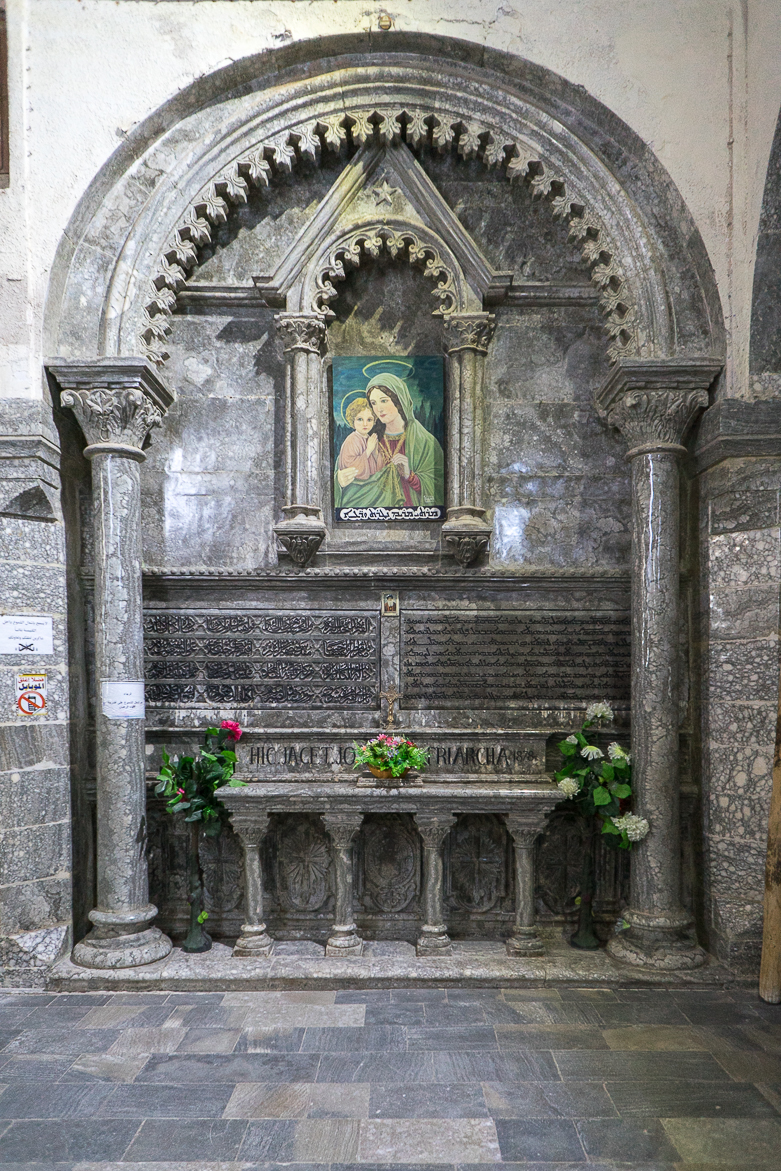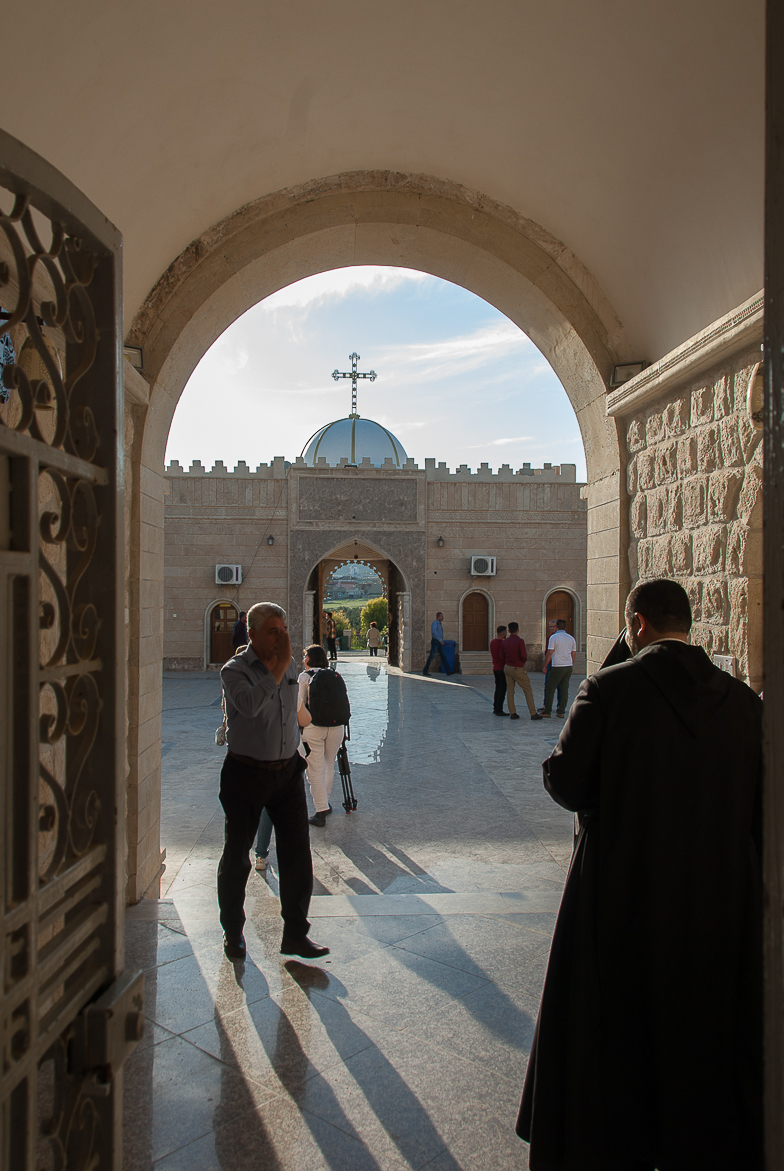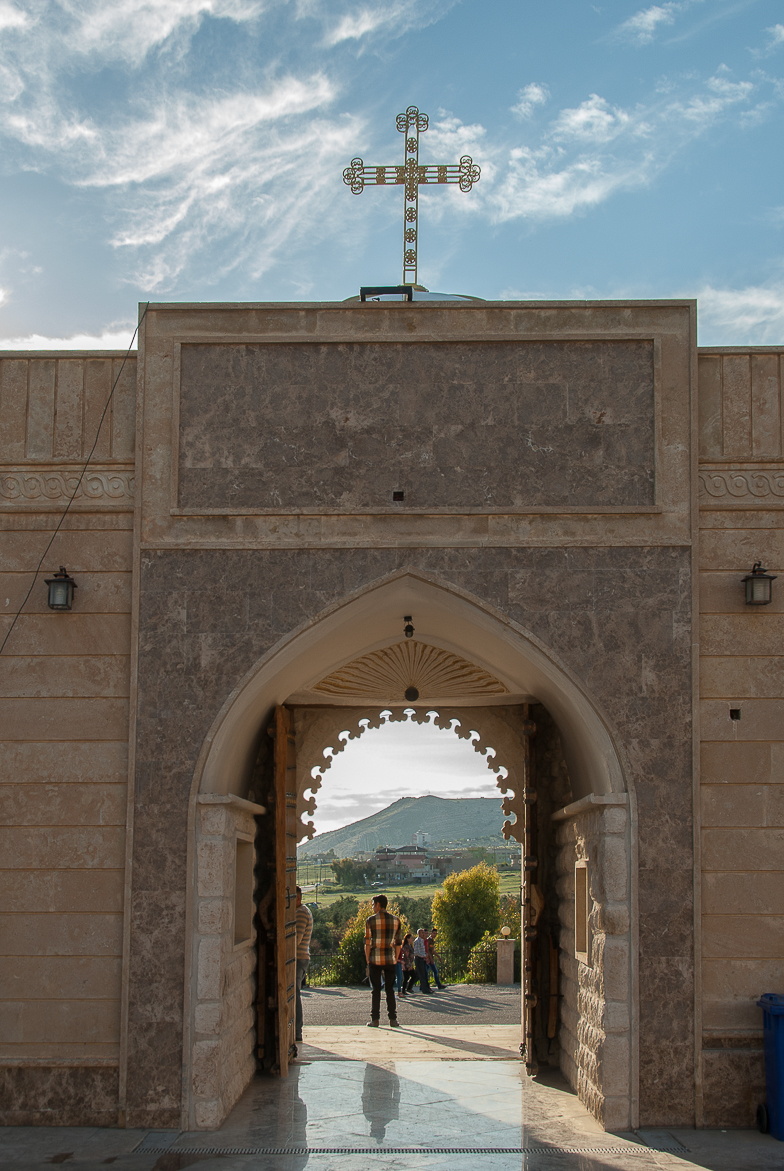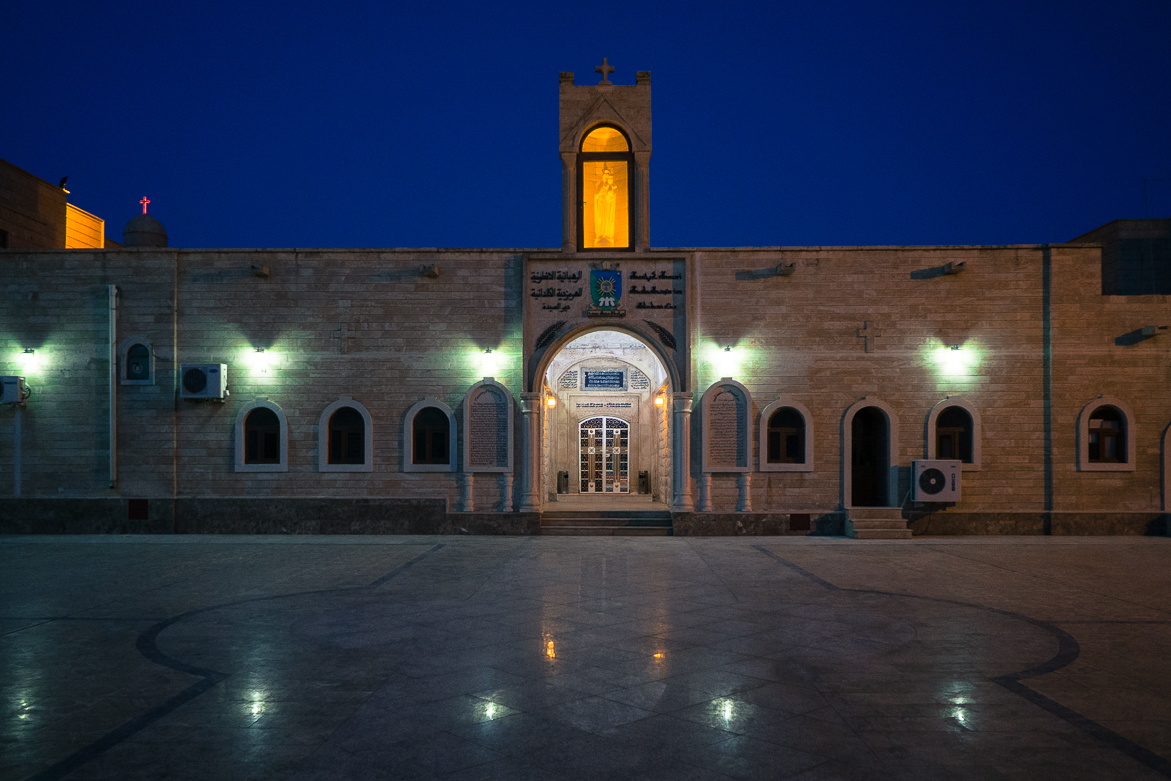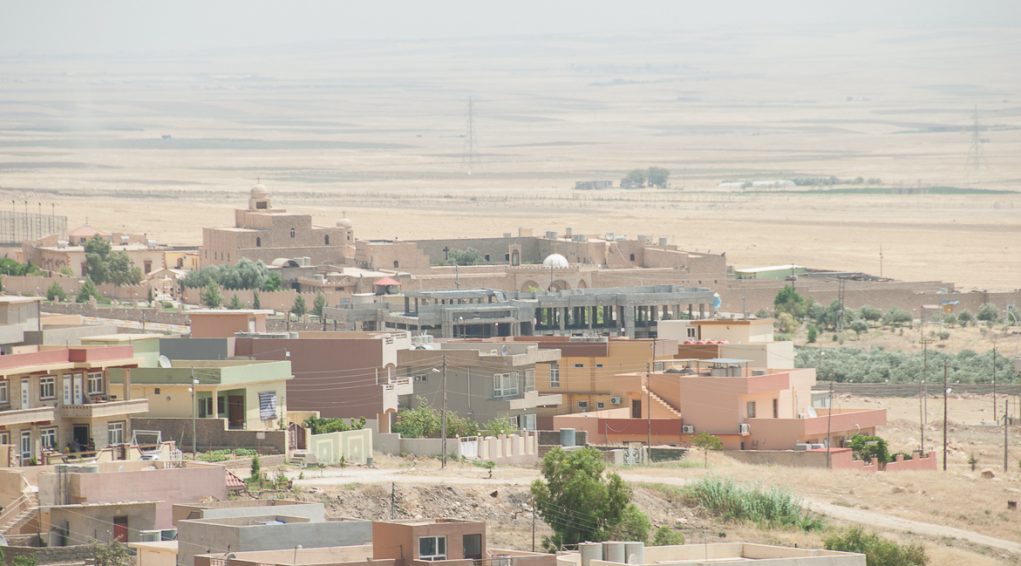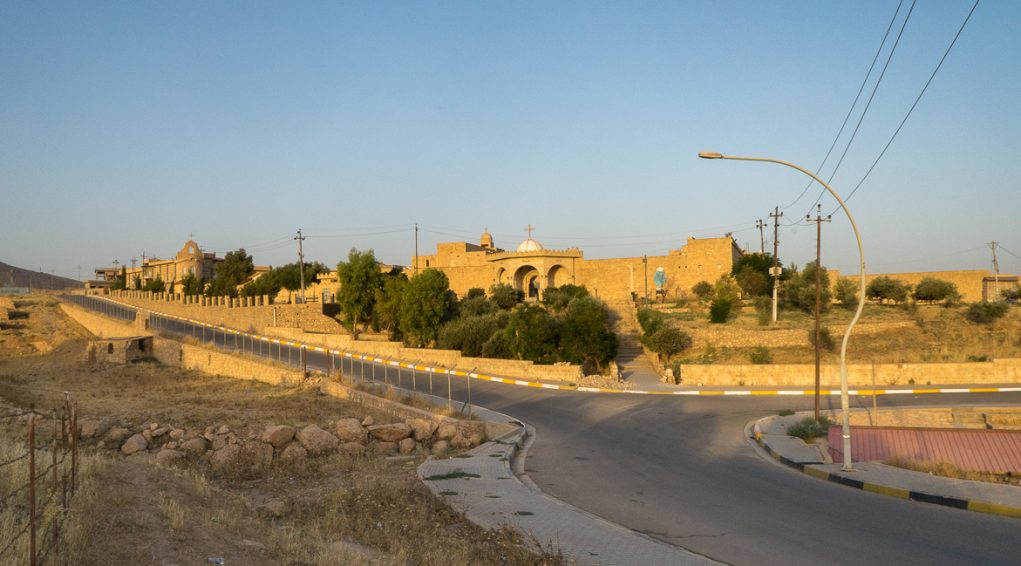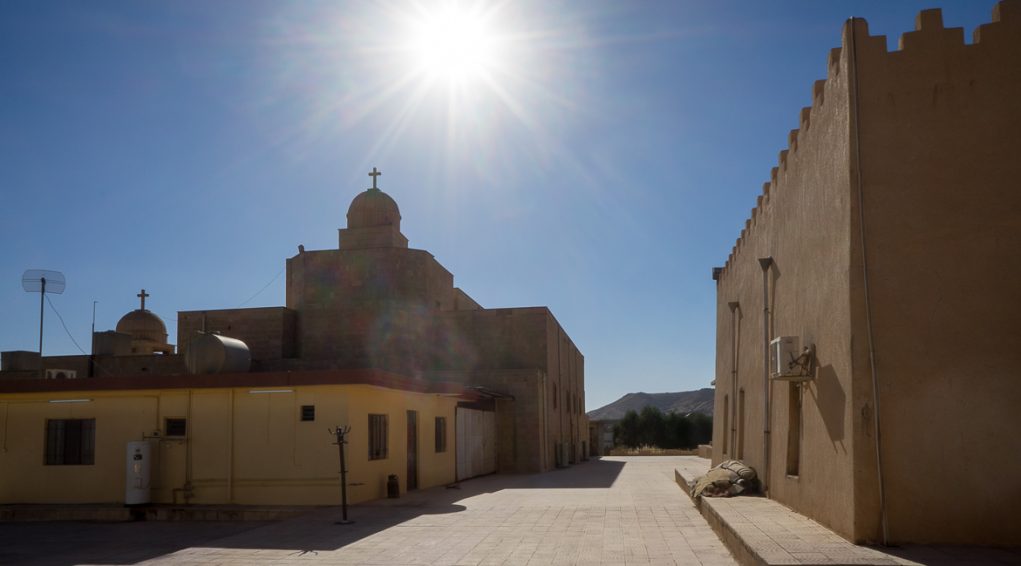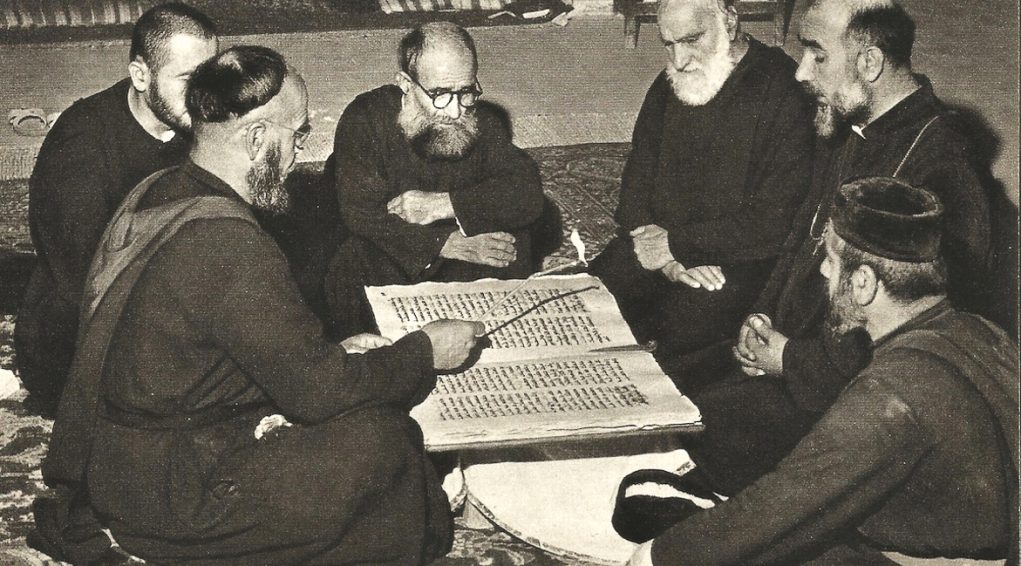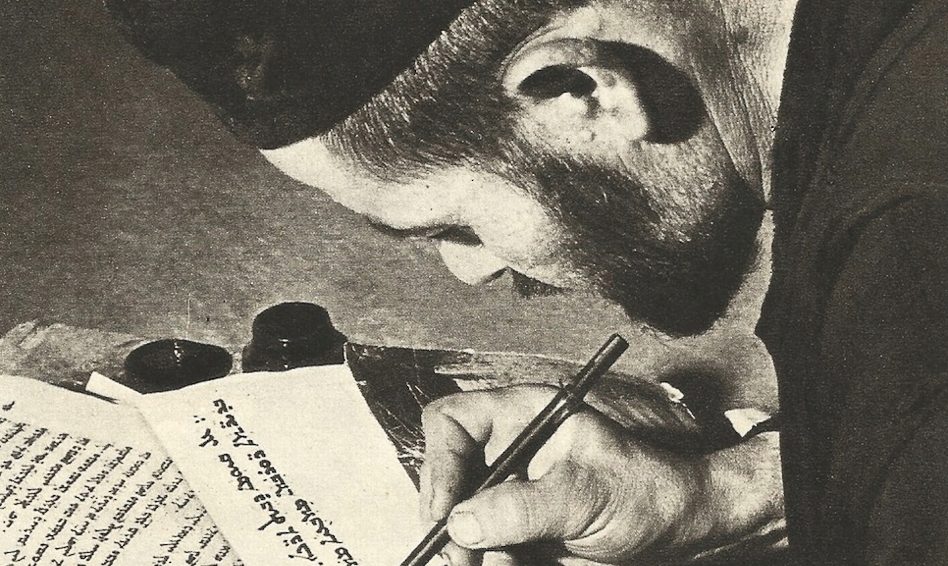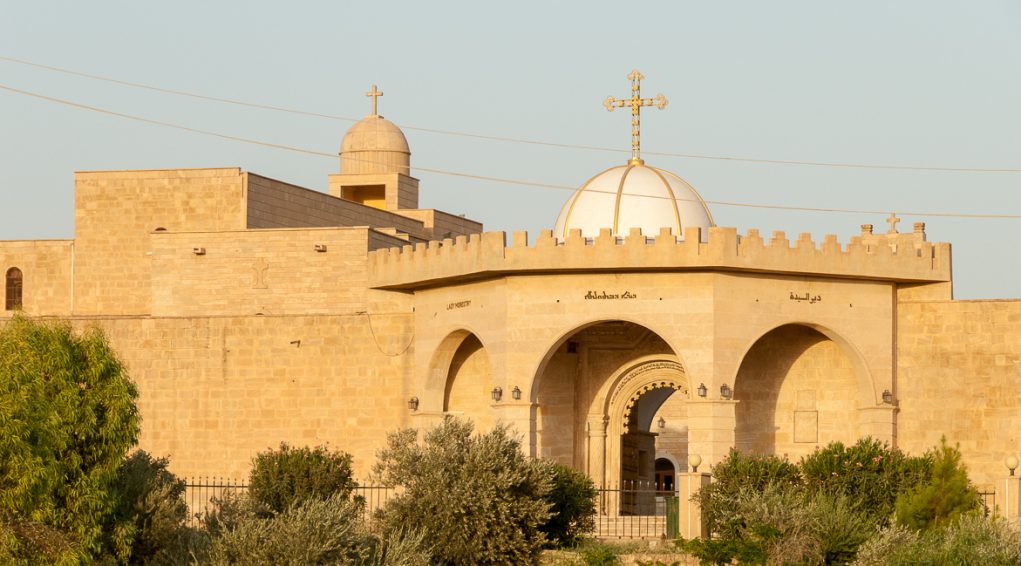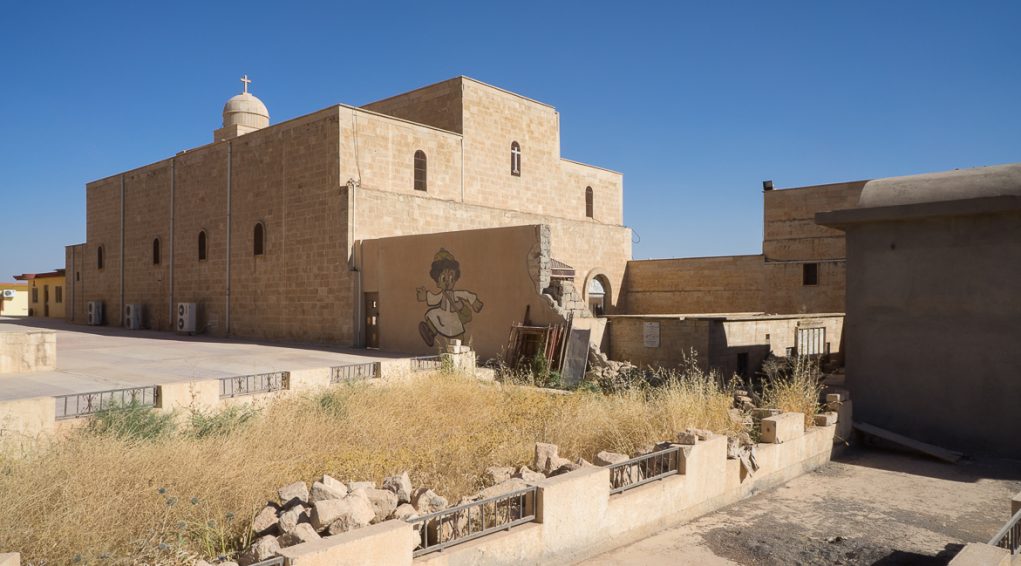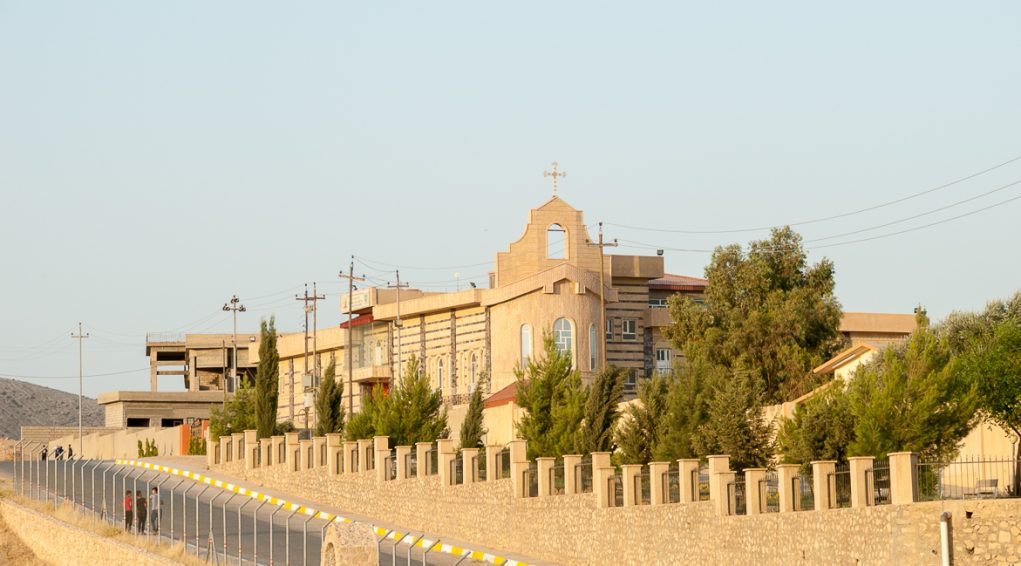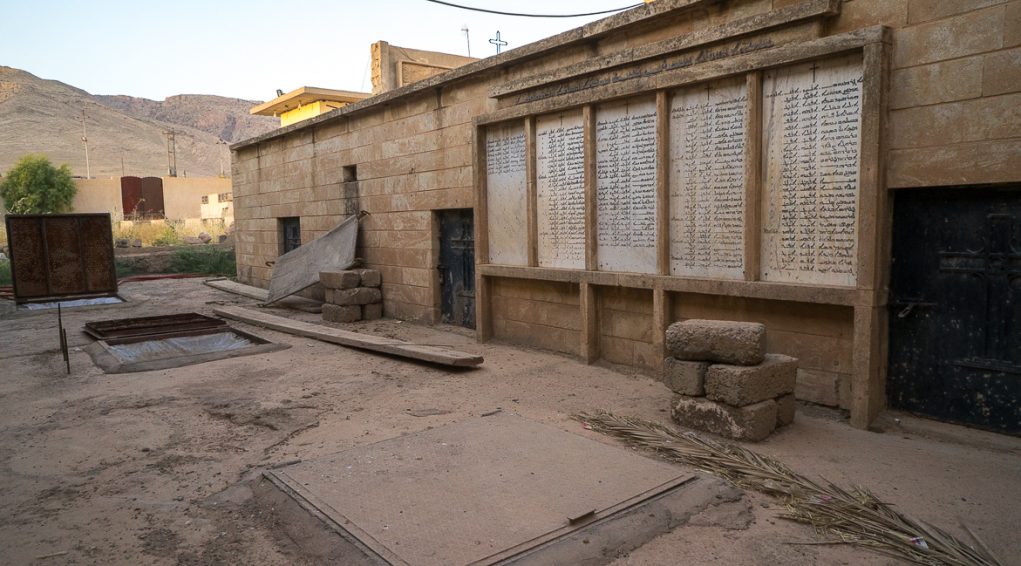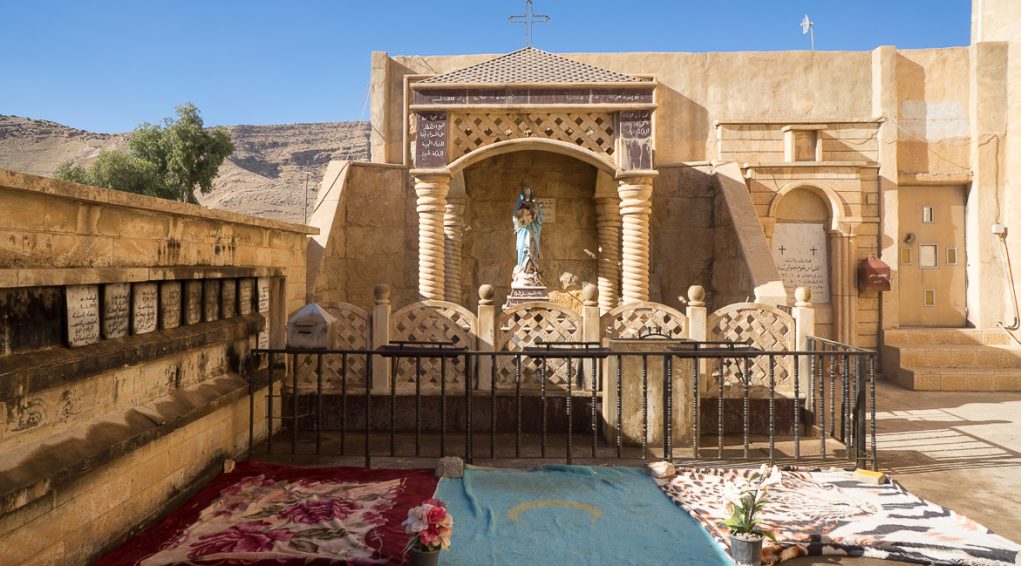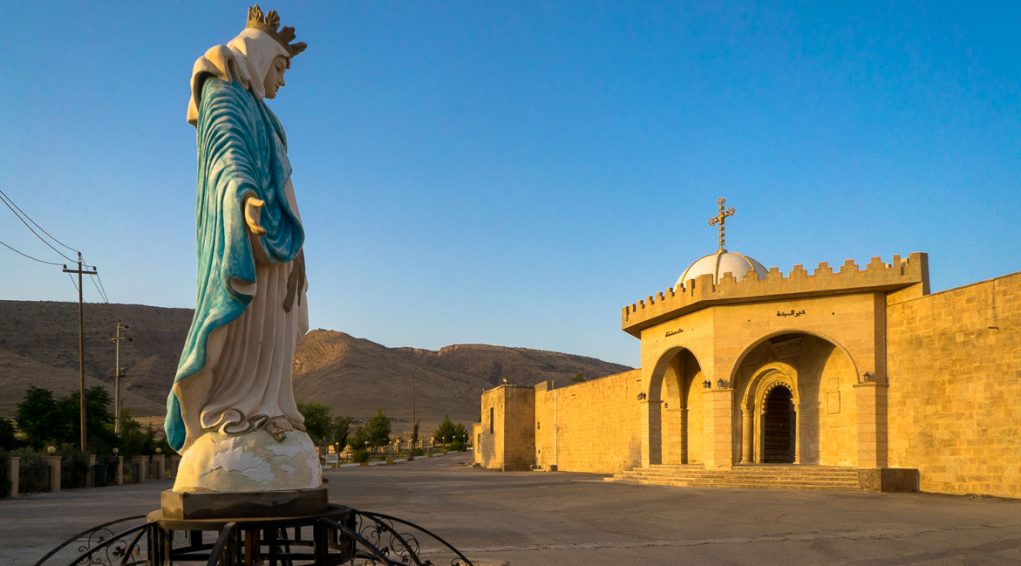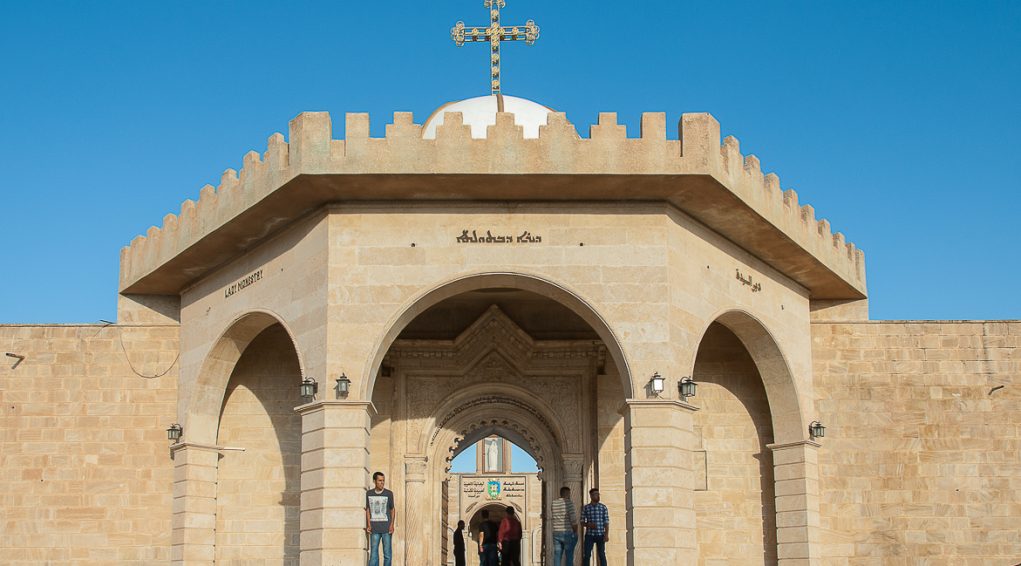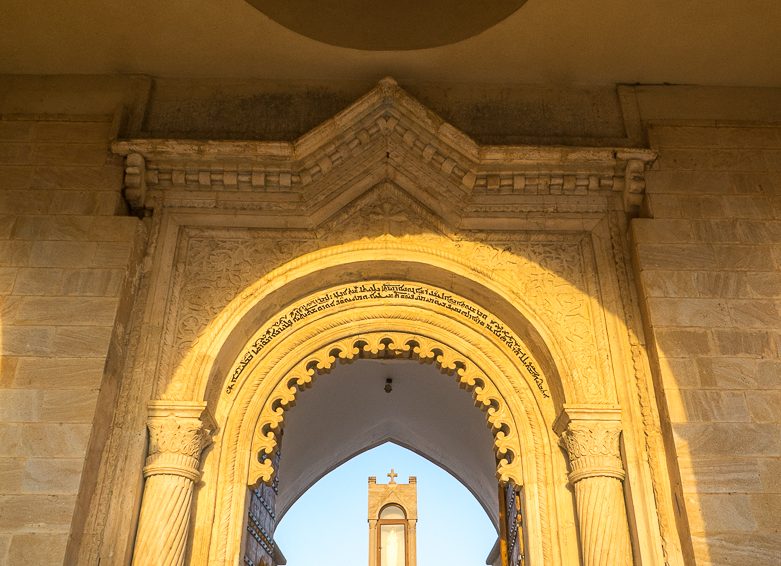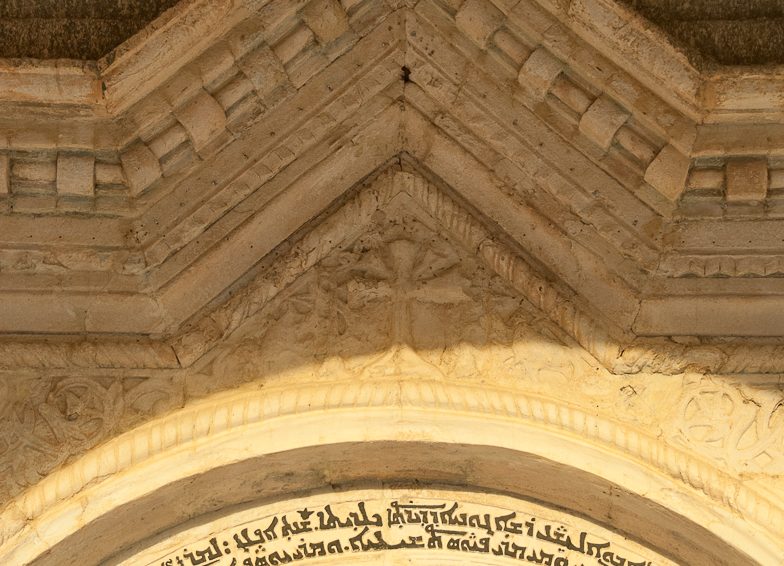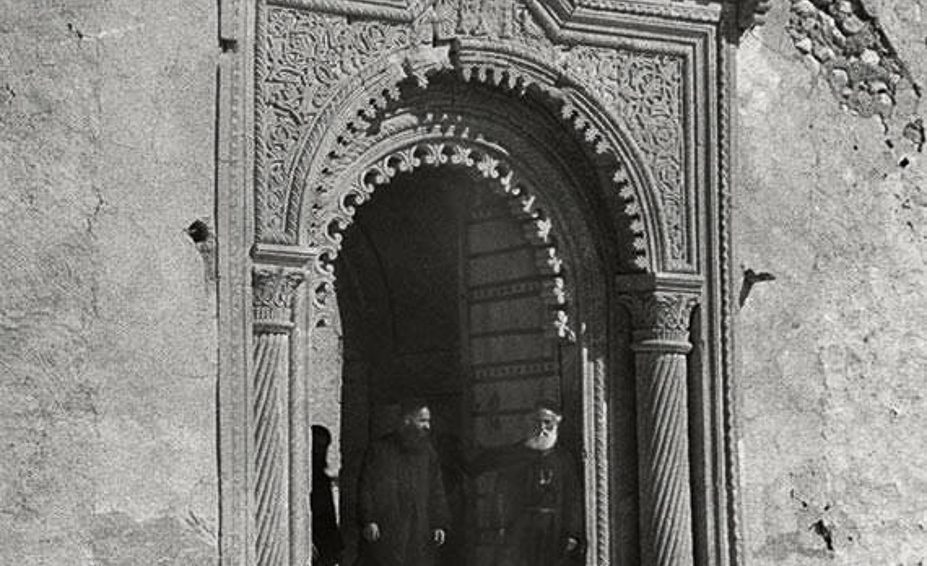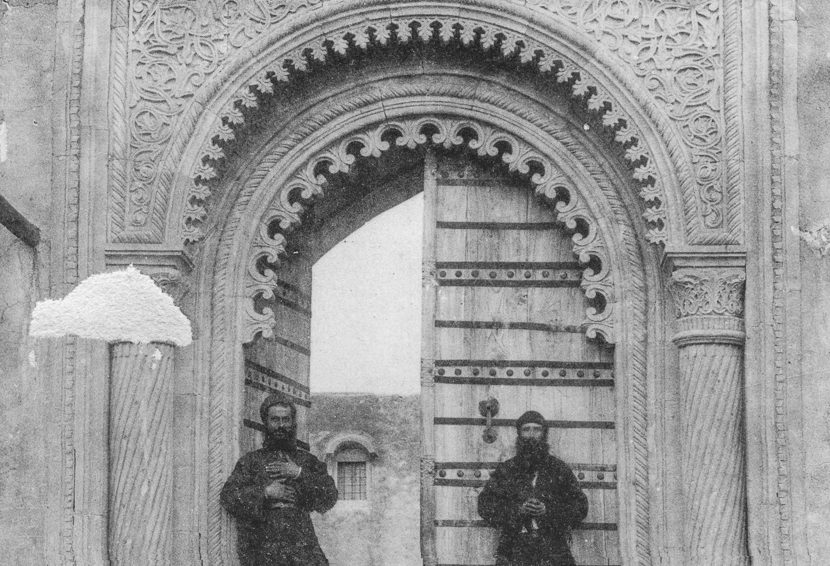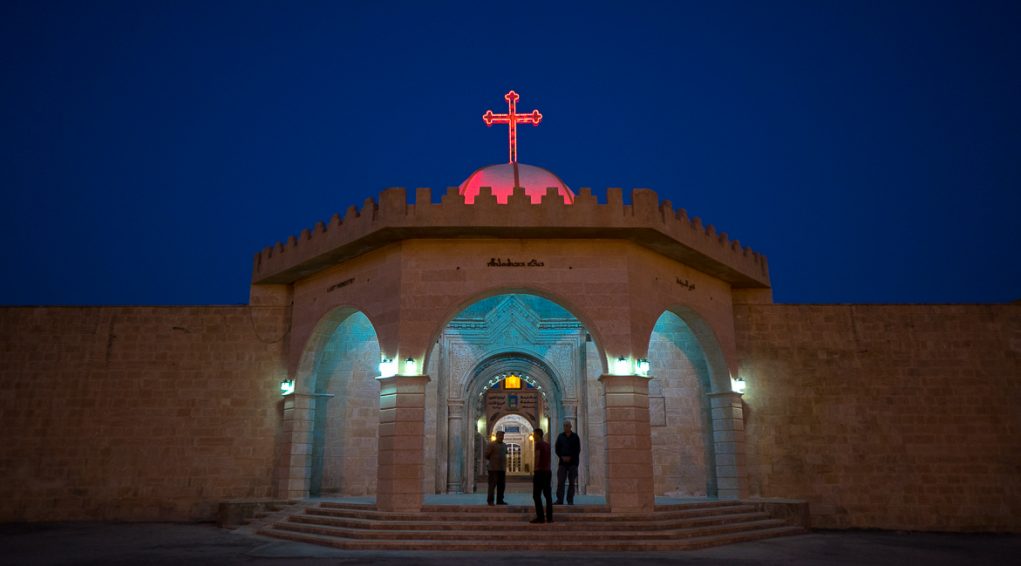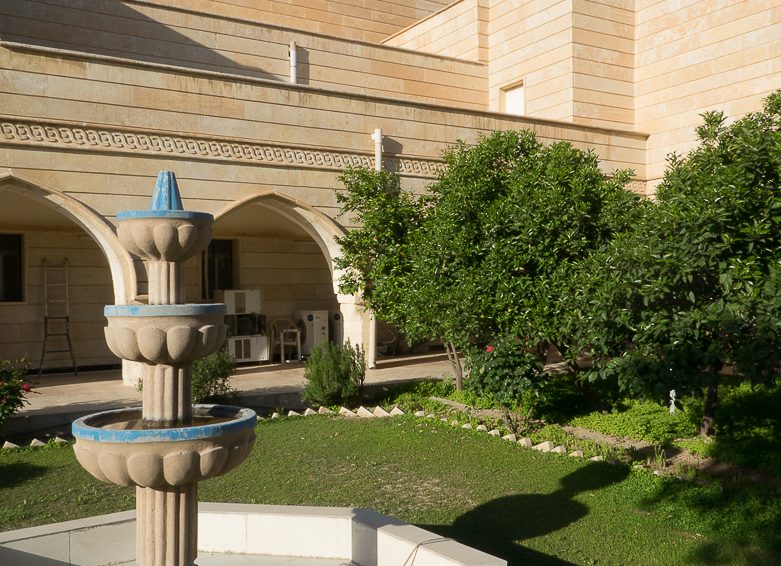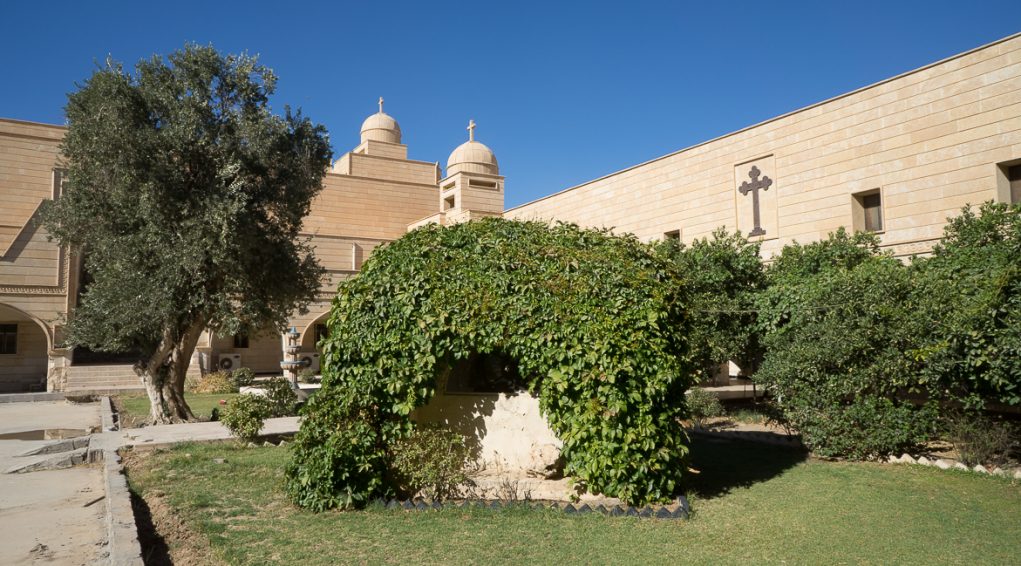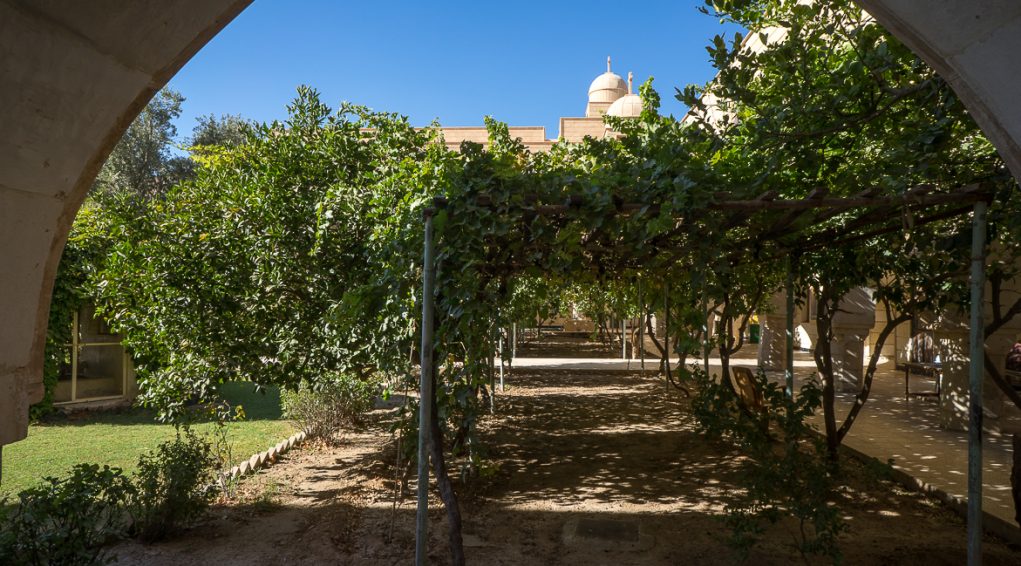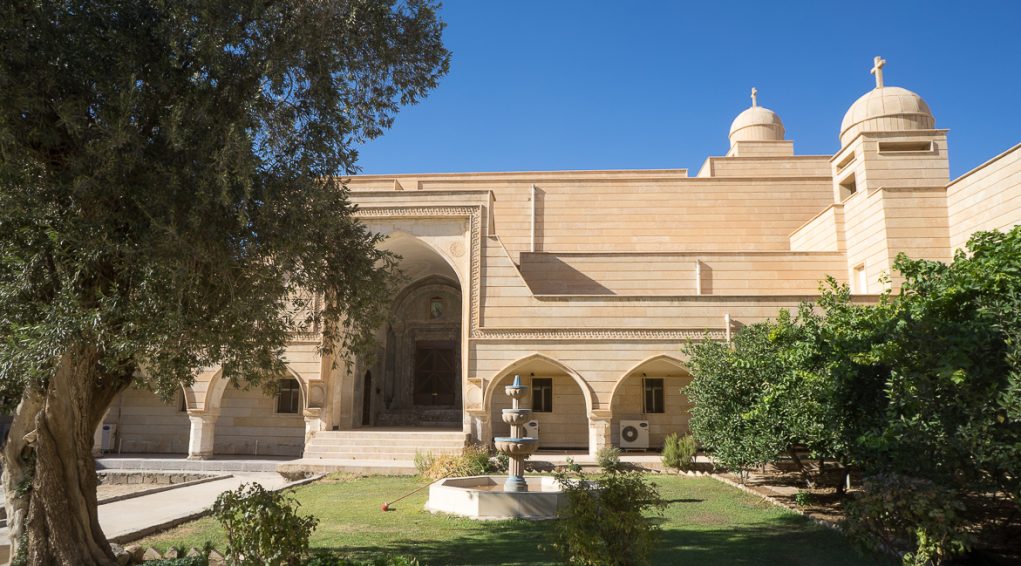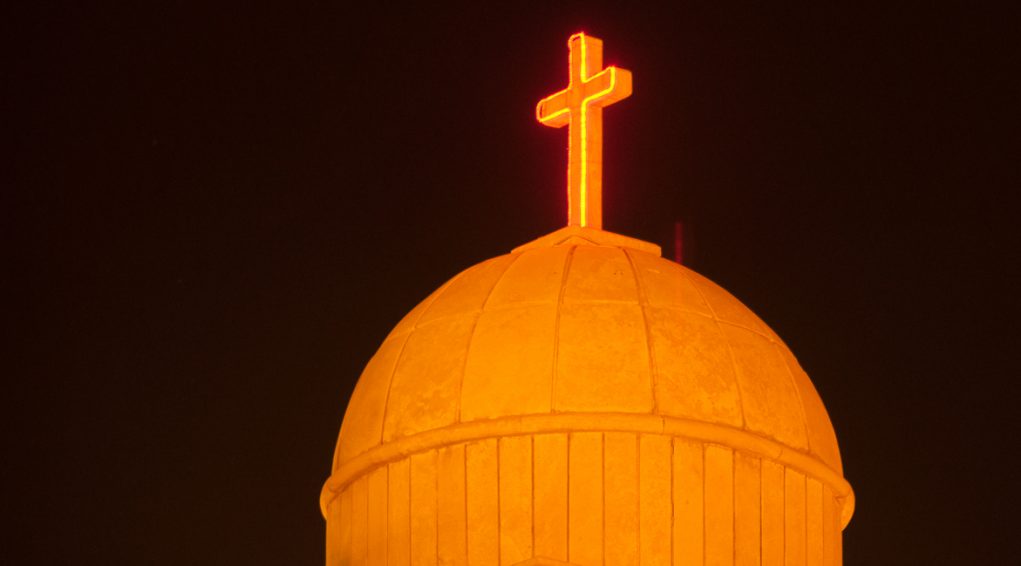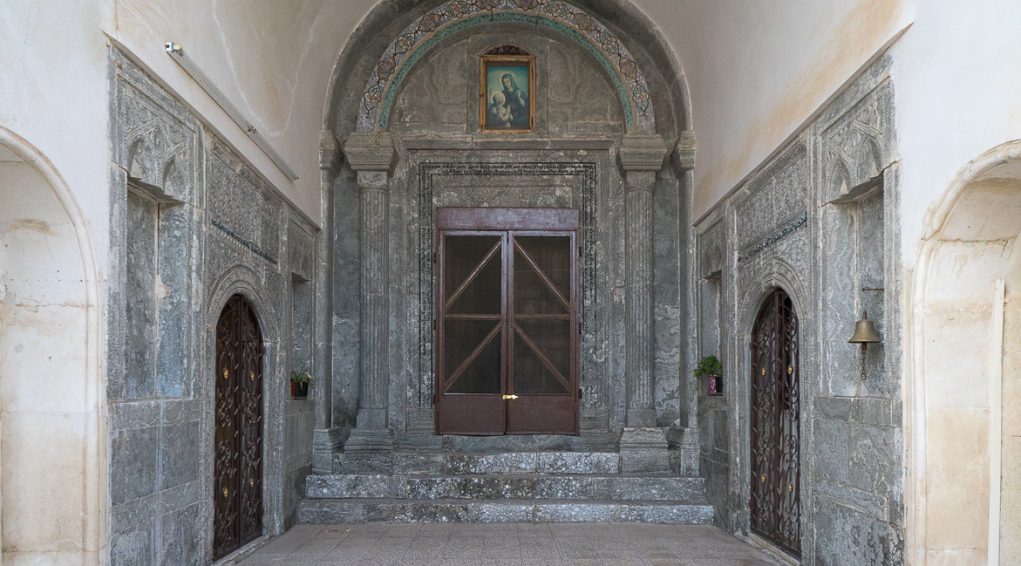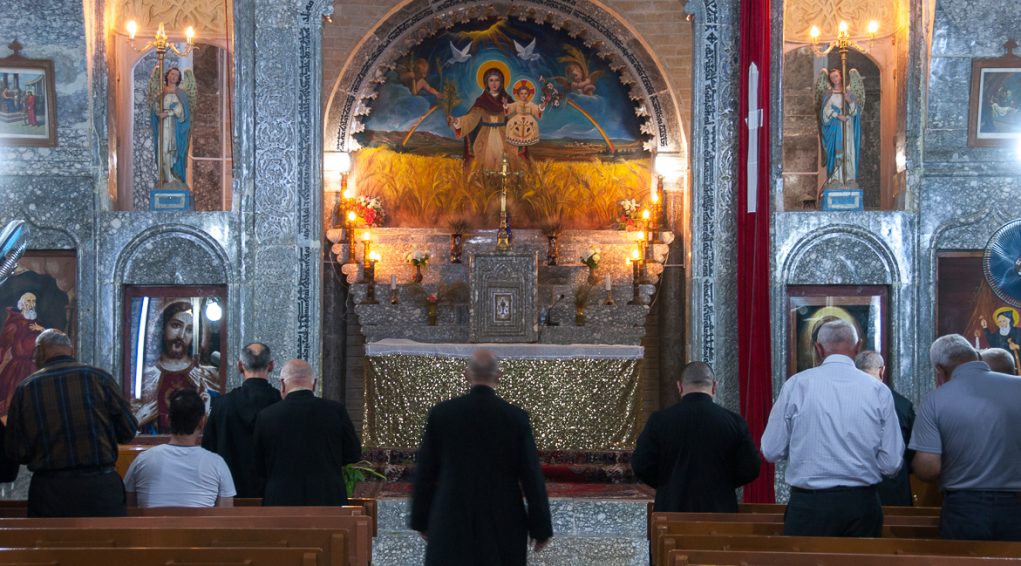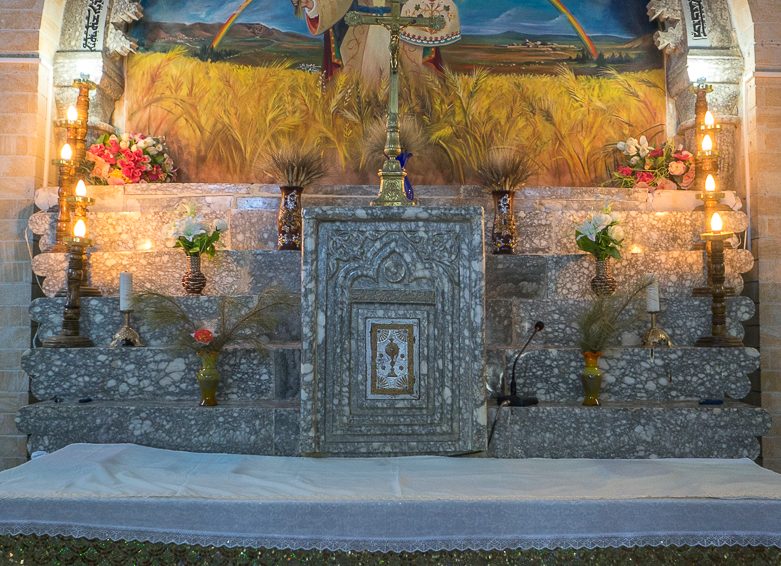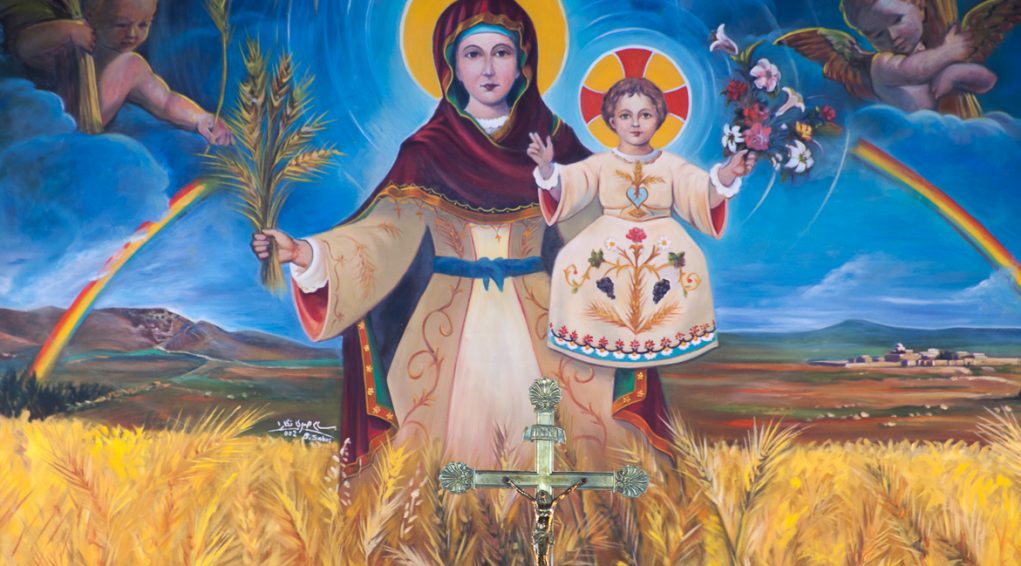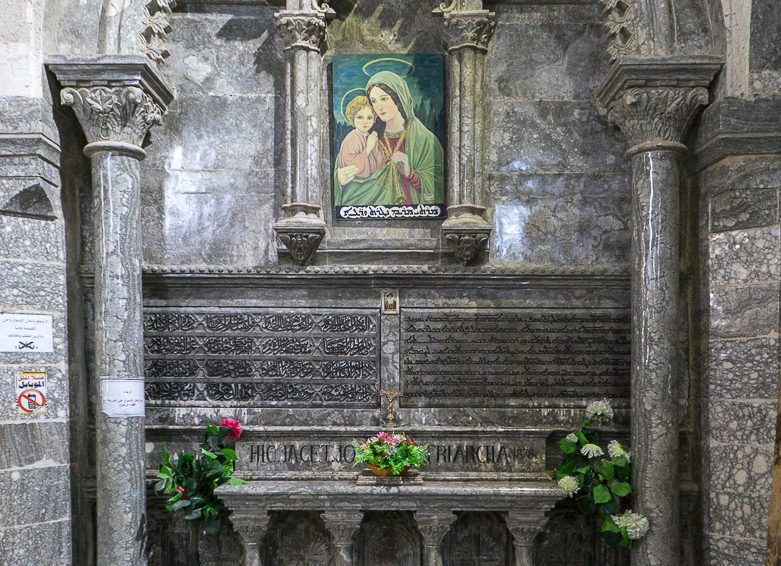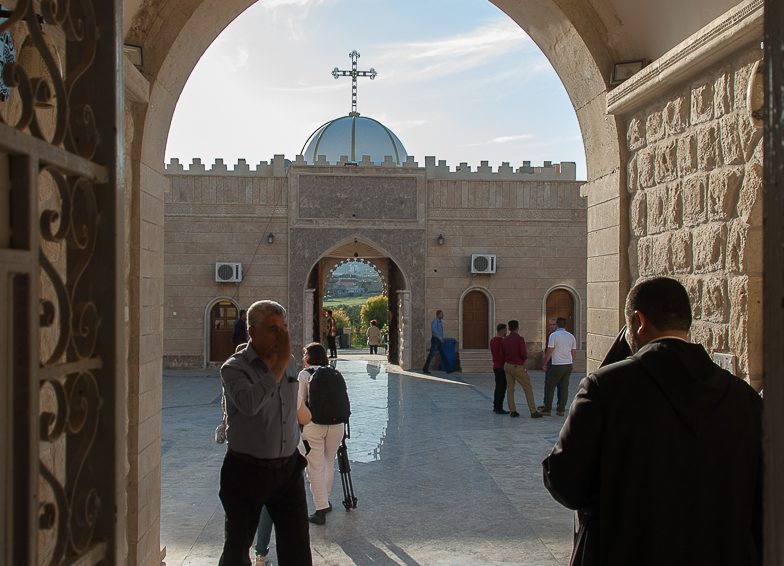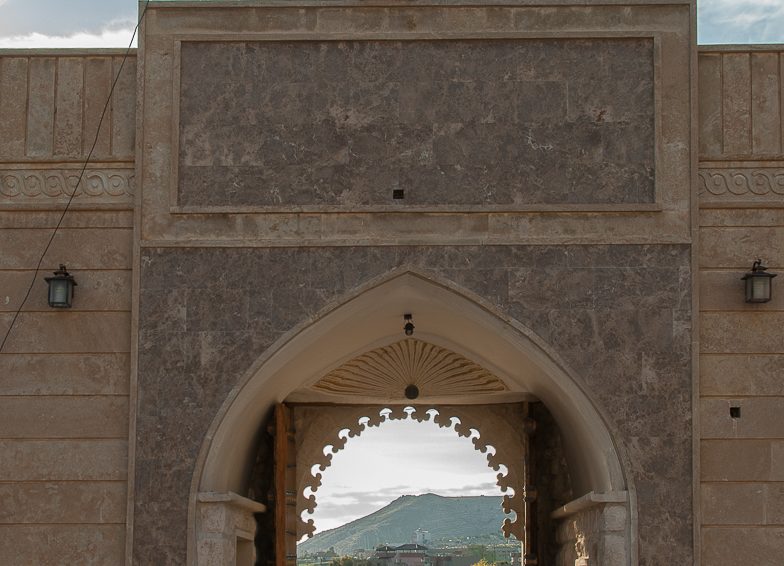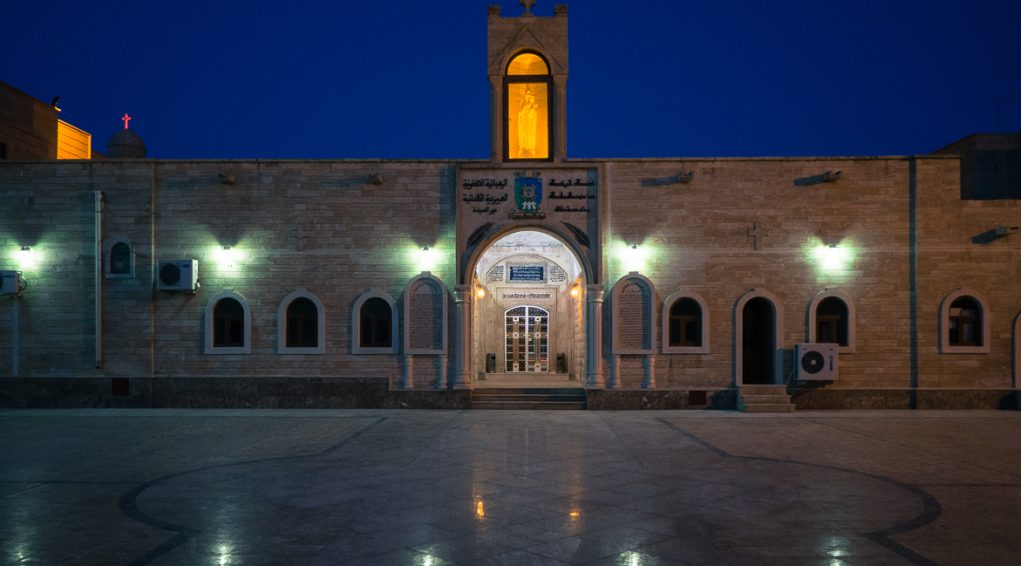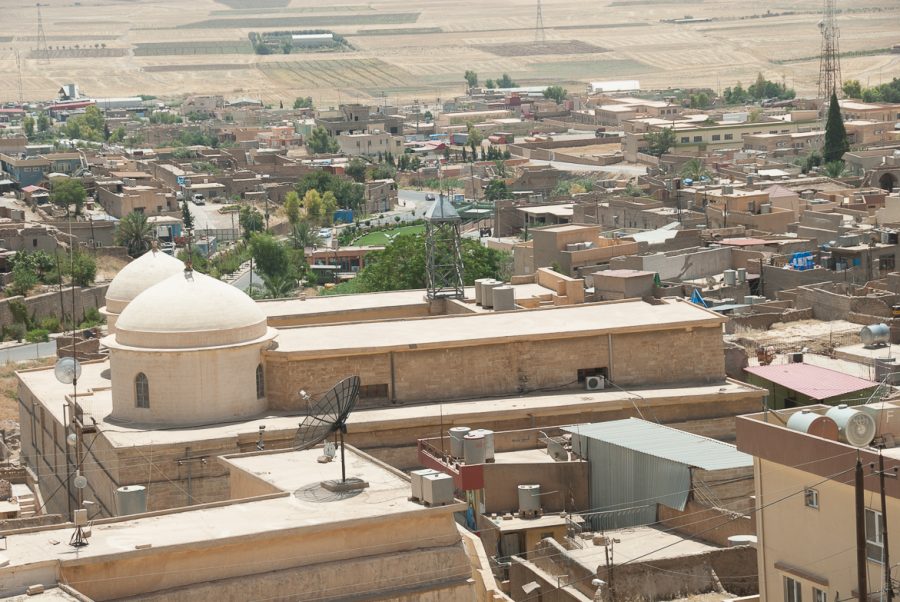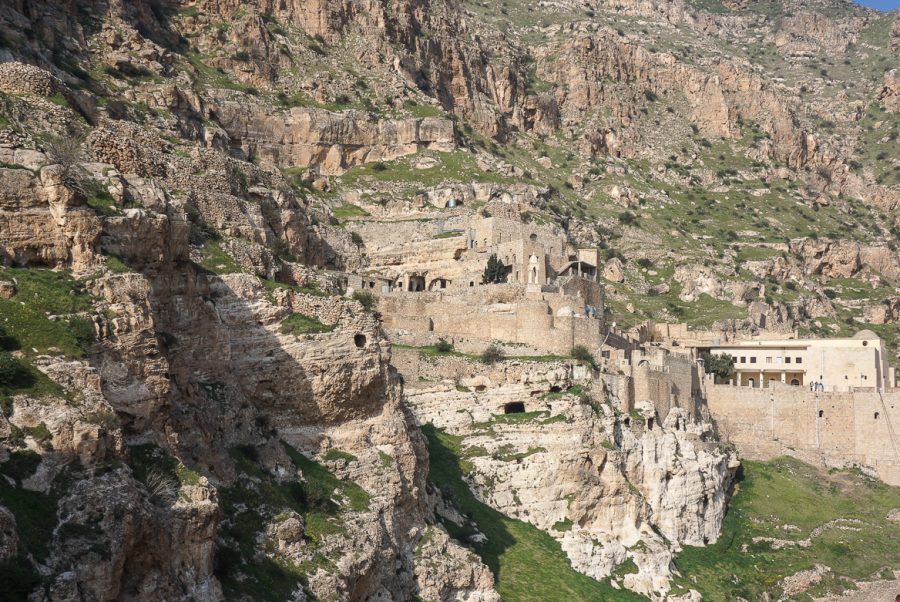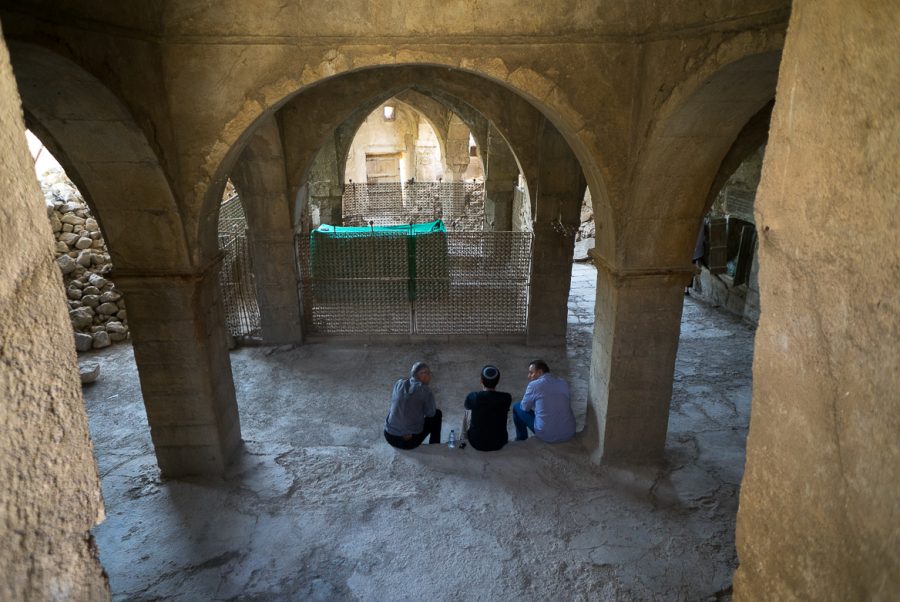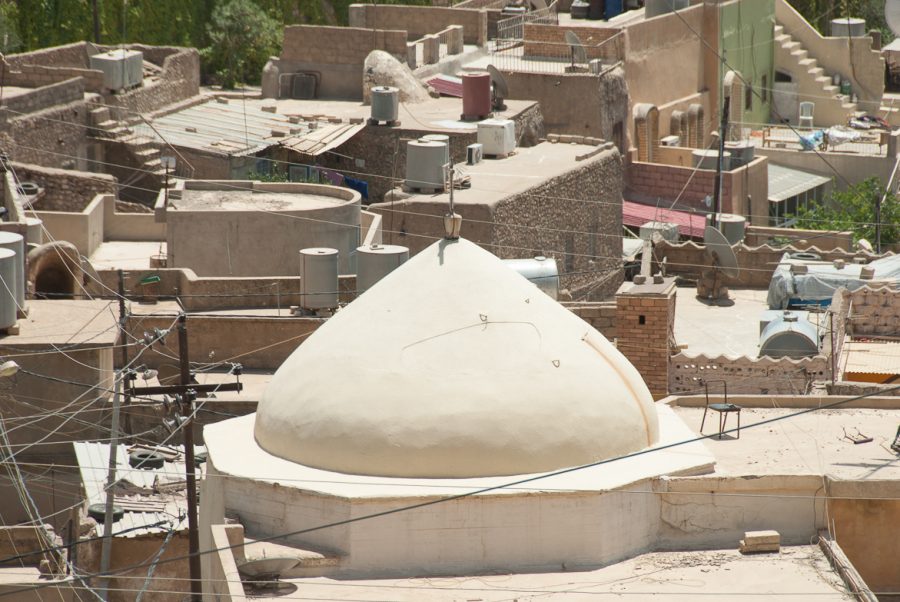Monastery our Lady of the Seeds
The monastery of Our Lady of the Seeds, also known as the Monastery of the Virgin Mary is located in Alqosh, 36°43’56.8″N 43°06’40.3″E, 588 meters high.
It can be seen as a real flagship for Chaldean cultural and spiritual identity.
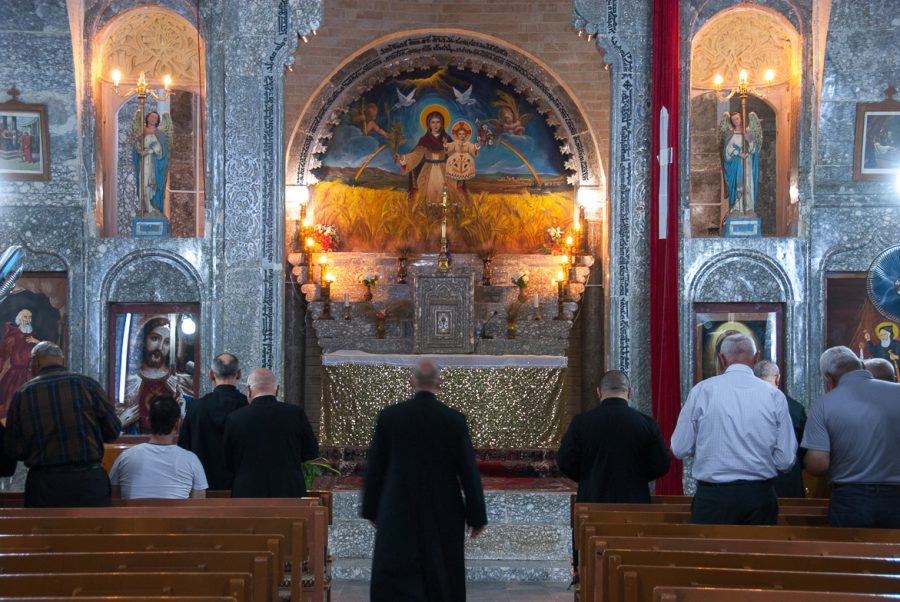
The Monastery of Our Lady of the Seeds was completed in 1858. It had been built on request of the Chaldean Patriarch Joseph VI Audo (1847-1878), who needed a place to move the monks of the very ancient Rabban Hormizd Monastery, into a more appropriate place, more modern, more adapted and more secured. The abbey church of the Monastery of Our Lady of the Seeds is a real architectural gem. Its inner structure and decorative facing are all of grey marble from Mosul. The profusion of finely engraved ornaments emphasizes the marble’s warmth and natural glow.
An outstandingly delicate geographical position
The monastery of Our Lady of the Seeds[1] – Dair Al-Sayida – is located in Alqosh, in the north of the Nineveh province [36°43.947’ N 43°06.671’ E], 588 meters high, 10 km from the eastern bank of the Tigris and 40 km up North from Mosul. It is a large estate, on the eastern side of the Chaldean city.
Its position is outstandingly delicate both geographically and historically, on the very edge of antique Assyria and the former kingdom of Armenia, at the modern-day borders between Iraqi Kurdistan, Turkey and Iran.
The monastery of Our Lady of the Seeds is often marked out as the “Plain monastery”, in opposition to the “Mountain Monastery”, Rabban Hormizd Monastery, overlooking the valley, nestled in the mountain. Both monastic sites are very close to each other and are at seeing distance.
_______
[1] The monastery of Our Lady of the Seeds (Notre Dame des Semences) is also known as the Monastery of the Virgin Mary and in some rare cases of Our Lady, Protector of the crops or Guardian of the Plants. For this notice, we shall keep the name “of our Lady of the Seeds”, close to the translation of the name (Notre-Dame des Moissons, “Moissons” meaning “Harvest”) used by J. M. Fiey in his work Assyrie Chrétienne. He remembers us that the Monastery feast day, on May 15th each year, is also the Harvest festival day.
History of a great Chaldean monastery
The Monastery of Our Lady of the Seeds was completed in 1858. It had been built on request of the Chaldean Patriarch Joseph VI Audo (1847-1878), who needed a place to move the monks of the very ancient Rabban Hormizd Monastery, into a more appropriate place, more modern, more adapted and more secured[1].
The famous city of Alqosh, renowned for its copyists, calligraphers, writers and poets, who all wrote numerous works and manuscripts, was also lacking a great monastery with a modern, safe and functional library.
_______
[1] Rabban Hormizd Monastery embodied the rivalries between the Roman Catholic Church and the Church of the East. Those rivalries led in the 16th century to the creation of the Chaldean (Catholic) Church.,
The Alqosh population gradually became catholic and the city churches turned to another Church administration. This actually happened to Rabban Hormizd Monastery, originally one of the most famous monasteries of all the Church of the East. The construction of the Monastery of Our Lady of the Seeds could then be seen as a way of granting the dominating Alqosh city with a very important and new spiritual place, that would be plainly Chaldean as from its foundation and able to embody the revival and the influence that was required.
Following the manuscripts’ trail
The “Plain Monastery” was therefore much better adapted to the monks’ and visitors’ needs and the library from Rabban Hormizd Monastery moved in as early as 1857[1] (so probably before the end of the construction), more precisely the collections that had survived the Kurdish ravages from 1842 and 1850, and the natural disaster in February 1851, as a stream flooded more than 1000 manuscripts.
Thus, the Monastery of Our Lady of the Seeds maintained for nearly a century a “worldwide famous[2]” library, whose manuscripts were afterwards transferred to “Mar Gwargis Monastery in Mosul in the 1960’s and ended up in the new Baghdad Monastery, created in 1969[3]”.
However, “more than 1100 manuscripts[4]” were still to be seen in 2011 in the “display cabinets” in the Monastery of Our Lady of the Seeds’ library. They are supposed to have been moved for safe-keeping “in the mountain[5]” when ISIS was devastating the Nineveh plain.
_______
[1] In Notes sur les manuscrits syriaques conservés dans la bibliothèque du couvent des Chaldéens de Notre-Dame des Semences, Mgr Addaï Scher, p.481, Journal Asiatique, Paris, Ernest Leroux éditeur, MDCCCCVI
[2] In Assyrie Chrétienne, vol II, Imprimerie catholique de Beyrtouth, J.M.Fiey, p.549
[3] In Manuscrits arabes chrétiens en Irak, Joseph Habbi, Paroles de l’Orient 22 (1997) p.363-364
[4] In Rapport Alain Desreumaux. 09-09-2014
[5] Id. with quoted sources of Sébastien de Courtois
Description and access
The site where the monastery of Our Lady of the Seeds stands, a little aside from the historical centre of Alqosh, offers a beautiful panoramic view on its surroundings.
The abbey-church takes up the centre of the compound. It is all around surrounded by the cloister, domestic quarters and the monks’ cemetery, but also by two guest houses and an orphanage.
Beyond the enclosing walls, a large agricultural estate with fields and orchards is being exploited by tenant farmers, who therein contribute to the monastery resources.
The access to the monastery is situated on its western side, along which a promenade has been laid out, where children, grown-ups and elderly people peacefully stroll, gently looked on by of a gold-crowned statue of the Virgin Mary, arms outstretched, erected above a globe and trampling upon a snake.
The monastery entrance
The monastery doorway is a sumptuous gate, out of finely crafted cut stone, resting on two columns with capitals, topped by a stilted arch, adorned with a multifoil frieze. In the tympanum, a discrete cross has been carved, framed with floral and vegetal patterns, typical of Arab or Persian ornamentation. Two written lines of inscriptions in Syriac language run in the inner circle of this arch, crowned by a pointed pediment. This beautiful stone gate, which is still nowadays fitted out with its two original wooden folds, seems to be a little bit hidden by the porch, built in front of it.
This trapezium-shaped porch is topped by a dome, itself surmounted by a golden metal trifoil cross, and punctuated with Babylonian battlements and merlons. It underlines the Assyrian-Chaldean identity of the monastery. Recently built, this piece of architecture combines smooth stone and concrete and offers a regenerative shadow on the threshold of the convent.
The cloister, representing the Bible
Right after the enclosure gate, the monastery opens onto a wide rectangular and open courtyard, tiled on its whole surface. On both sides are laid out the domestic quarters.
When continuing along after the entrance gate, you need to cross a gallery to get to the magnificent tree-lined cloister. This is the most ancient part of the convent[1], with the abbey church.
This beautiful inner garden, planted with various flower and fruit species, adorned with an impressive vine-covered pergola, with a well and a basin fountain, has been designed as a landscaped representation of the Bible. On one side, it opens on the refectory, the kitchen, the cellar, the chapter house and the monks’ cells. On the other, it opens on the southern porch of the abbey church.
The beauty of this cloister, and the serenity that emanates from it, are in complete opposition to the existential anguish and the never-ending war atmosphere prevailing in Iraq. Sharing a cup of tea with the Chaldean monks, under the refreshing foliage of this Eden garden is a salutary quietening moment for all Iraqi people and a sign of respect for travellers.
_______
[1] The convent was being reorganized during the visit of members of MESOPOTAMIA in August 2017
The abbey church, an architectural gem
The abbey church of the Monastery of Our Lady of the Seeds is a real architectural gem. Its inner structure and decorative facing are all of grey marble from Mosul. The profusion of finely engraved ornaments emphasizes the marble’s warmth and natural glow.
To get into the church from the cloister, you need to get through the southern doorway, right under a large porch, which is made of a double arch on columns and capitals. Under the upper lancet arch, there is a stilted lower arch, which is enriched with inscriptions and polychromatic arabesques.
When you look at it from the outside, the abbey church of Our Lady of the Seeds seems massive with its 2-levels flat roof, at the eastern point of which rises a dome upon a drum. In contrast, the inside the church, under its pointed barrel vaults, reveals relatively modest, even cosy, proportions. Its framework, furniture and decoration elements complement each other harmoniously. Shimmering marbles, massive hexagonal nave’s pillars, a splendorous royal door, a beautiful high altar with steps on top it its table, and stunning ornamental frescoes make this abbey church a real gem of religious art.
Although its inner architecture does not indeed fully respects the ideal standards, that are supposed to be typical of Assyrian-Chaldean churches, it respects them on the whole.
The church is indeed East-oriented, towards the Levant, but the separate entrances for men and women do not seem to be used as such. Apart from the monks, who get in from the cloister, the believers usually get in through the western doorway, on the southern side aisle.
Both traditional spaces are still separately maintained in the inner architecture: the nave for the people, and the sanctuary where only clergy may enter. A high marble wall stands in between, with three doors, one in the middle, and two on each side. A red velvet liturgical curtain can let see or hide the high altar, according to the different moment of the liturgical service.
At the extreme eastern end of the nave, in the middle of the church, stands the large royal door, in thinly engraved marble, decorated with two dedicatory inscriptions and one epigram. On both sides of this massive arch, two pairs of delicately cut niches come on top of each other. The below ones make frames to two paintings, one of the Sacred Heart of Jesus (left) and one of the Immaculate Heart of Mary (right). Both top niches each house a statue of an angel of light.
The architecture in 3 parts of the sanctuary respects the traditional standards for Assyrian-Chaldean churches. Right of the holy of Holies, a large door opens on the baptismal font with a very ancient baptistery. On the left, another door opens to the diaconicon. Both chambers can also be accessed to by the doors on the side-aisles of the nave.
Beautiful high altar
You need to climb up three steps and get under the royal arch to enter the sanctuary.
Built up against the eastern wall, the beautiful grey marble high altar with 7 steps on top of the table, and in front of which stands an antependium[1] recovered with a fine cloth made out of gilded and sequined brocade. In the centre of the altar is a tabernacle for the Blessed Sacrament. Above the tabernacle, there is an exquisite polychromatic and hemispherical painted fresco, representing the Virgin Mary and Child standing in the middle of a wheat field in the Alqosh countryside. This unique masterpiece shows the Saviour’s mother in a beige-ochre tunic, holding in her right hand a wheat sheaf that a cherub seems to be delicately taking to add to his own bouquet. With her left arm, she is carrying the Holy Child, dressed in a tunic, adorned with ears of wheat and bunch of grapes. The Christ has a nice fresh flower bouquet in his left hand, gently looked upon by another cherub that holds tight his big wheat bundle. With his right hand, he is blessing believers and fields. The background of the fresco shows Alqosh, its fields and its mountain. Two flying doves sit on top of the beaming aureola of the Virgin Mary. Hence, a vivid rainbow is to be seen under an overcast sun, probably a sign of the harvest season. This exceptional piece of art hypnotizes the visitors. Softly lit up with little lamps, and surmounted by a marble arch with ornamental multifoil frieze, it becomes the focal point of the prayer, just like Orthodox icons may do.
_______
[1] frontal
In memory of the glorious Patriarch Joseph VI Audo
In the abbey church, the graves of some famous monks are also to be seen; their shrines with epitaphs engraved in Arabic, Syriac or Latin run along the side-aisles walls.
The Chaldean Patriarch Joseph VI Audo rests there. All Chaldean patriarchs before him used to be buried in old Rabban Hormizd Monastery. All followers have been and will be buried in Our Lady of the Seeds. The sumptuous funeral altar which is dedicated to Patriarch Audo is just on the right when you get through the western entrance. The tomb structure consists in pillars with capitals, a stilted arch adorned with a multifoil frieze, a tympanum decorated with a marble reredos, which frames a Virgin and Child painting, and lastly a credence table on 4 carved legs. This funeral monument shows an epitaph which proves the deep affection of the Chaldean people to its glorious patriarch “the Holy Church grieves for him, lamenting over and over this holy chief of our nation[1]”.
_______
[1] Extract from the epitaph about Patriarch Audo. See Assyrie Chrétienne, vol.II, J.M.Fiey, p.549. Also see the Recueil des Inscriptions Syriaques, Tome 2, Amir Harrak, éditions de Boccard, for the detail of all dedicatory inscriptions, particularly funeral inscriptions of the monastery of Our Lady of the Seeds.
News from the monastery
Although ISIS is a life-threatening danger for both humans and architectural heritage, the monastery of Our Lady of the Seeds in Alqosh remains a beacon of spirituality. During those past dark years, it even has been a refuge.
Its relatively uncomfortable geopolitical position, at the border of the Nineveh province and the autonomous Iraqi Kurdistan region needs also to be pointed out. The monastery’s attractiveness, and even its influence, has not been deteriorated by the volatile political climate[1] between Iraqi federal authorities and Kurdish authorities. It is quite the reverse actually.
The Chaldean Church celebrates Our Lady on the Seeds on May 15th.
_______
[1] Strong tensions which happily turned out to be of no consequence occurred with the independence referendum for Iraqi Kurdistan on 25 September 2017. Alqosh is now controlled de jure by the Federal Governement’s jurisdiction since October 2017, after being controlled de facto by the Kurds.
Monument's gallery
Monuments
Nearby
Help us preserve the monuments' memory
Family pictures, videos, records, share your documents to make the site live!
I contribute